-
摘要: 核电池具有能量密度高、工作稳定可靠、无需人工干预等优点,在需要长期稳定供电的场合具有独特优势,其中热转换式核电池(RTG)是技术最为成熟且应用最早的一类,而β辐射伏特效应核电池已有商业化案例。目前,在β辐射伏特效应核电池研究中存在着放射源自吸收效应浪费能量、转化效率低、换能器件辐射损伤严重等问题,而对于一个实际的核电池,由于放射源自身不断衰变的属性,导致源的成分及其活度随着时间而发生变化,最终影响核电池的电学性能,其影响程度需要加以深入研究。本文以时间轴的形式对核电池的发展进行了全面回顾,简要介绍多种主流类型核电池的原理和应用范围;对于β辐射伏特效应核电池,指出放射源的自吸收是其中的关键科学问题。对于使用63Ni和TiT2放射源的核电池,给出了其电学性能随时间变化的规律;指出对于某一特定结构的β辐射伏特效应核电池设计,在前期的模拟优化环节中,精细计算是至关重要的;最后提出了将放射源与换能材料相结合、使用含有较重同位素的换能器件的设想,这些设想有利于解决放射源自吸收问题、提高核电池输出功率和减轻辐射损伤的影响。Abstract: The nuclear battery has many advantages, including high energy density, stable performance, no manual intervention etc., which can be widely utilized in cases requiring long-term reliable power supply. Among them, the Radioisotope Thermoelectric Generators (RTG) is the earliest used and the most technically matured one, while betavoltaic battery is now commercialized. However, there are still some problems including self-absorption effect, low energy conversion efficiency and severe radiation damage which restrict the application of betavoltaic batteries. Additionally, for an actual nuclear battery, it should be noticed that the component and density of the source will be changed because the radiation source decays continually, which leads to the electrical performance decline. In this review, the major events in nuclear battery development are listed on a timeline, and the principles and applications of different types of nuclear batteries are also introduced. For betavoltaic battery, the existence of self-absorption effect is pointed out as an important scientific problem, and for batteries with 63Ni and TiT2 source, the time-related electrical properties are also obtained. This paper also pointed out that, fine and precise calculations are very crucial in the optimized designing processes for a particular structure of the practical nuclear battery. Finally, researching assumptions including combining the source and the energy converting material and the use of energy converting structures with heavier isotopes are presented, which are benefit to solve the self-absorption problem, rise the output power of the nuclear battery and reduce the influence of radiation damage.
-
1. 引言
1.1 核电池发展回顾
核电池(Radioisotope Battery, RIB,或称放射性同位素电池)是将放射性同位素衰变时释放的能量转换成电能的一种装置。由于放射性同位素的衰变过程是连续不断的且不受环境影响,因此核电池具有工作稳定可靠、无需人工干预的特点,并具有极高的能量密度,在需要长期稳定供电的场合具有独特优势。
核电池经历了一个多世纪的发展,现在已有多种转换机制。图1以时间轴形式列出了核电池发展过程中的里程碑事件。1913年,Moseley[1]设计了第一个放射性同位素电池,它使用20 mCi的β放射源,采用直接收集机制获得了150 kV的电压以及大约10–11 A的电流,但这种电池需要很好的真空环境,实际应用的范围十分有限。1929年,Ioffe首次提出了热电转换机制[2],采用这种机制的核电池在航天方面具有极高的应用价值。1937年,Becker和Kruppke利用电子轰击Se材料,观察到半导体内产生电子空穴对,即β辐射伏特效应[3]。从20世纪50年代开始,核电池进入了快速发展时期,热电转换式核电池以及辐射伏特效应核电池从理论研究逐渐过渡到器件制造和应用。1953年,Rappaport[4]使用50 mCi的90Sr-90Y放射源轰击硅同质pn结,获得了250 mV的开路电压和10–5 A的短路电流。1954年,Jordan等[5]首次公开了热电转换式核电池,它使用210Po作为放射源,转化效率为0.2%。1956年,美国制定了核动力辅助计划SNAP(Systems for Nuclear Auxiliary Power)[6],并在1961年成功发射了载有放射性同位素温差发电器 (Radioisotope Thermoelectric Generators, RTG) 的导航卫星[7],这是核电池在空间探测方面的首次成功应用。同一时期,苏联也成功使用RTG为军用卫星供电。1971年,我国第一台核电池——210Po电池安装试验成功,填补了国内这一领域的空白[8]。20世纪70年代,人们尝试将使用147Pm[9]和238Pu[10]源的核动力心脏起搏器应用在医学领域。随后,为了更好地满足实际需求以及解决核电池的辐射损伤问题,多种使用新型转换机制的核电池得到了应用。基于热转换的其他转换机制包括热离子转换[11](Radioisotope Thermionic Emission Generators, RTIGs)、热光电转换[12](Radioisotope Thermophotovoltaic, RTPV)、碱金属热电转换[13](Alkali Metal Thermal to Electrical Conversion, AMTEC)等,通过合适的设计还可获得既适用于真空环境也适用于气体环境下的多任务热电转换机制[14](Multi Mission Radioisotope Thermoelectric Generators, MMRTG)装置,但它们一般需要大量的放射源以及严格的屏蔽措施,微型化研究目前不够成熟。目前情况下,更适合微型化的核电池是非热转换机制核电池,它们除辐射伏特效应核电池之外,还包括辐致荧光型[15](Radioisotope Photovoltaic Generators, RPG)、往复悬臂梁式[16](Self-reciprocating Radioisotope-powered Cantilever)核电池等。进入21世纪,人们研究了更多的新型换能方式,而β辐射伏特效应核电池也实现了商业化。这些新型核电池包括磁约束下的β粒子电磁辐射收集式核电池[17]、水基核电池[18]等,它们的实用性需要进一步的研究;2010年,City Labs公司研发的NanoTritiumTM β辐射伏特效应核电池获得了通用许可证,意味着这种核电池可以在市场上购买[19]。相对来讲,核电池研究在国内起步较晚,但近年来相关领域的研究工作引起了人们的关注和重视。2004年,中国原子能科学研究院同位素研究所与中国电子科技集团公司第十八研究所合作,承担了“百毫瓦级钚-238 同位素电池研制”任务,并于2006年研制成功[20];随后,这类核电池被应用在嫦娥三号(2013年发射)和嫦娥四号(2019年发射)探测器中[21]。对于非热转换式核电池,国内已有多个高校和研究所进行相关研究,并收获了可观的成果,主要包括厦门大学郭航研究组[22](致力于辐射伏特效应核电池研究)、中国工程物理研究院罗顺忠研究组[23](致力于辐射伏特效应核电池研究)、兰州大学李公平研究组[24](主要致力于动态热转换式核电池研究)、西北工业大学乔大勇研究组[25](致力于β辐射伏特效应核电池研究)、南京航空航天大学汤晓斌研究组(致力于多种类型的核电池研究,包括辐致光伏[26]、双重转换[27]、β辐射伏特效应[28]、小型RTG[29]等)、中国科学院核能安全技术研究所韩运成研究组[30](致力于直接充电式核电池研究)等。
本文简要介绍多种主流类型核电池的原理和应用范围,对核电池发展的前沿动态进行总结,并介绍吉林大学核电池研究组在β辐射伏特效应核电池放射源自吸收、半导体器件性能模拟和核电池时间性能方面的研究成果,最后就解决β辐射伏特效应核电池放射源自吸收问题、提高输出功率和降低辐射损伤方面给出一些研究设想。
1.2 核电池分类
图2列出了核电池的分类情况,按照换能方式不同,可将核电池分为热转换式和非热转换式两种,又可按照是否有运动部件分为静态转换和动态转换两类。热转换式核电池将放射性同位素衰变时产生的热能转换为电能,非热转换式核电池将放射性同位素放出的带电粒子或产生的衰变能直接或间接地转换成电能[31-32]。
1.2.1 热转换式核电池
核电池诸多分支中,技术最成熟且最早应用的种类为RTG。它的基本结构如图3所示,包括同位素热源(温度为Th)、半导体n型端、半导体p型端、冷源(温度为Tc)和回路(具有负载RL),半导体一端与同位素热源接触,一端与冷源接触,产生温差;由于Seebeck效应[33],n型与p型半导体会产生电势差,若形成闭合回路即可输出电流。此种电池的电学性能由半导体材料的Seebeck系数、热导率、热电偶两端温度差、热电偶长度、负载电阻等因素决定,其运行稳定可靠,结构坚固,不需启动装置,因此在空间探测方面获得了广泛应用,但转化效率相对较低,需要大量的放射源和严格的屏蔽措施[34]。为了进一步提高装置的转化效率,减少放射源使用量(活度),人们研究了其它的热转换机制。
![]() 图 3 RTG基本结构[34]
图 3 RTG基本结构[34]热离子转换型核电池的核心是热离子发射现象,它拥有热阴极和冷阳极,热阴极发射的热电子被阳极收集,通过闭合回路做功并返回阴极[11],其电学性能由工作温度、阴极和阳极材料的功函数共同决定。这种电池具有较高的转化效率,约为20%[35],但使用的放射性同位素(如244Cm[36])产量很低,非常昂贵,制约了其发展。
热光电转换机制与太阳能电池的转换机制具有类似之处,但在光谱方面有区别,即热光电转换式核电池的光源发光温度要低得多(约为1300~1800 K),并且换能器件与光源的距离很近。两种因素共同作用导致热光电转换型核电池比普通的太阳能电池具有更高的转换效率,其理论转化效率可达30%以上[12]。
碱金属热电转换器于20世纪60年代末出现,其核心材料为钠-β氧化铝固体电解质(BASE),化学组成为Na5/3Li1/3A132/3O17,具有很高的Na+传导率和很低的电子传导率[37]。工质为金属钠,通过钠的近等温膨胀过程在低压条件下获得大电流,并具有很高的转化效率[38]。
使用动态转换机制的热电式核电池具有一个共同的特点,即热能通过工质转换成机械能,驱动交流发电机最后转换成电能。常见的过程包括Rankine、Brayton和Stirling循环,在相同的温度下,Stirling循环型装置具有最高的转化效率(大于30%),并且在低功率条件下也有较好的性能。但此类装置在受到撞击时存在工质泄漏的可能,因此尚未在航天领域得到应用[39]。
1.2.2 非热转换式核电池
(1)直接充电式与直接转换型核电池
按照能量转换的次数分类,可将核电池分为直接充电式、直接转换型和间接转换型三类。直接充电式核电池可直接收集α或β粒子的电荷来获得电流,直接转换式核电池只需一步过程将衰变能转化为电能,而间接转换型通常需要两步过程将衰变能转化成其它形式的能量,最终转换为电能。
直接充电式核电池的基本结构包括放射源、真空系统、电荷收集装置。通常选择较薄的放射源使较多的带电粒子出射,减少自吸收效应。在真空环境下,放射源发出的α或β粒子被电荷收集装置收集并形成电场,由于放射源会发出大量的带电粒子,这种核电池可以获得很高的电压,一般在几个或几十kV数量级[40],且对材料的辐射损伤较轻,但短路电流较小,通常为nA量级,并且需要真空系统的支持,因此应用范围非常有限。
压电悬臂梁式核电池是一种特殊类型的直接转换式核电池,其结构如图4所示。由压电材料制成的悬臂梁一端固定,另一端可活动,并与β放射源有一定距离。放射源放出的β粒子在压电悬臂梁表面累积负电荷,而放射源表面产生过剩的正电荷,在电场力的作用下,压电悬臂梁的活动端与放射源表面接触,正负电荷中和,当电场力消失,压电悬臂梁发生振动并产生交变电流,最终悬臂梁回归原位,继续累积电荷开始下一循环。若选择合适的放射源以及压电悬臂梁材料,此种核电池具有在微机电系统领域应用的潜力[16]。
![]() 图 4 (在线彩图)压电悬臂梁式核电池[31]
图 4 (在线彩图)压电悬臂梁式核电池[31]直接转换型核电池的典型代表是辐射伏特效应 (radiovoltaic) 核电池,其原理如图5所示。放射源放出的α或β粒子射入半导体材料中,通过电离作用产生大量电子空穴对。若这些电子空穴对在换能器件(通常为pn结,pin结[41]或肖特基器件)的耗尽层中产生或漂移进入耗尽层,它们将在内建电场的作用下被分离并定向移动,接通外电路即可产生电流。若电子空穴对未被分离,它们将最终复合,其能量最终转换成热能。这种核电池易于微型化,可方便地与集成电路整合,非常适合在微机电系统中应用,但半导体换能器件需要长时间在辐射环境下工作,辐射损伤是必须考虑的因素,其使用时间和电学特性由半导体器件和放射源的特性共同决定。通常情况下,对于相同的器件,使用241Am放射源的α辐射伏特效应核电池具有更大的电流密度[25],但α粒子造成的半导体材料辐射损伤更为严重,器件的性能在初始几天之内有明显的下降[42],而β辐射伏特效应核电池可稳定供电较长时间[25],因此β辐射伏特效应核电池有更加广阔的前景。目前,已有研究组成功使用β辐射伏特效应核电池为电容器充电[43]。
![]() 图 5 (在线彩图)pn结型辐射伏特效应核电池原理图[31]其中I为电流; Vbi为内建电势; V为电压。
图 5 (在线彩图)pn结型辐射伏特效应核电池原理图[31]其中I为电流; Vbi为内建电势; V为电压。在两种功函数不同的材料之间加入合适的电介质,并将放射源混入电介质中即可构成接触势差式核电池。由于功函数不同,两种材料之间会形成内建电势,在内建电势的作用下,产生的电子空穴对会被分离和收集,接通外电路即可产生电流。这种核电池不依赖半导体材料,规避了半导体材料的辐射损伤问题,但转化效率较低[44]。
(2)间接转换型核电池
间接转换型核电池以辐致荧光型核电池为代表,可避免放射源与半导体直接接触,减轻辐射损伤的影响。它使用α、β、γ、X射线激发荧光物质发出荧光,再通过太阳能电池器件将光能转化成电能,从而形成辐射能→光能→电能的转化过程。这种电池需要发光效率高且透明度高的荧光物质,并且其发光光谱必须与后端太阳能电池器件光谱响应情况匹配。为了进一步减少光能的损失,通常加入光导和适当的反射材料使更多的光子与太阳能电池器件发生作用,其结构如图6所示[31]。但这种核电池的两步转化过程且转化效率均较低,因此总转化效率通常很低。
![]() 图 6 (在线彩图)光伏核电池原理图[31]
图 6 (在线彩图)光伏核电池原理图[31]1.3 核电池研究前沿动态
1.3.1 RTG的小型化研究
传统的大功率RTG可作为空间探测中的辅助电源,而功率为毫瓦量级的小型RTG可应用于小型科学仪器、机器人、探测车、着陆器、微型卫星等设备。近年来多个研究组对小型RTG进行了电学性能模拟和实际制作。Bahrami等[45]设计了一系列适用于小型机器人和立方卫星的圆柱体RTG,其燃料为238Pu,热电偶材料为Bi2Te3,通过不同的组合可获得的出射功率为40, 80和120 mW,设备总重量为760~1 352 g,高度和直径均小于20 cm。在实验方面,Liu等[29]对传统π型结构的RTG进行了改进,使电池的性能获得了很大提高。若使用以铜丝连接的同轴热电灯丝结构(concentric thermoelectric filament,如图7所示),在热端温度为398.15 K,温差为61.20 K时,一根热电灯丝可获得开路电压6.0 mV,最大输出功率2.0 μW,而相同情况下传统π型结构器件只能获得0.55 mV的开路电压和0.02 μW的最大输出功率。使用双层16根热电灯丝结构,可获得开路电压156.7 mV和最大输出功率85.8 μW,可见这种设计在需要高电压、低输出功率的微机电设备上具有应用前景。
![]() 图 7 (在线彩图)同轴灯丝结构的微型RTG结构图[29]
图 7 (在线彩图)同轴灯丝结构的微型RTG结构图[29]1.3.2 新材料研究
β辐射伏特效应核电池的性能与所使用的半导体器件性能直接相关。目前,Si材料(禁带宽度1.14 eV)和GaAs材料(禁带宽度1.42 eV)的特性研究和加工工艺较为成熟,但这两种材料所制成的β辐射伏特效应核电池电学性能和转化效率均较低[28],并且其晶格容易受到辐射损伤导致器件性能下降。理论研究表明,β辐射伏特效应核电池的理论转化效率与半导体材料的禁带宽度呈正相关,如图8所示[46]。并且,宽禁带的半导体材料制成的器件具有较高的抗辐射损伤能力以及较低的漏电流,这些因素使得宽禁带半导体材料(禁带宽度大于2.3 eV)在β辐射伏特效应核电池方面具有极大的应用潜能[47]。目前在β辐射伏特效应核电池方向研究较多的宽禁带半导体包括SiC[48-49]、GaN[50-51]等。2015年,Bormashov等[52]首次设计并制作金刚石基β辐射伏特效应核电池样机,并使用多种放射源对此样机进行测试。由于n型金刚石合成极为困难,此研究组选用p型金刚石制作肖特基器件。此样机共装配130个电池单元,总有效面积约为15 cm2。在使用63Ni放射源的情况下,电池的能量密度达到120 W·hr/kg,与化学电池处于同一数量级。此样机也具有较强的抗辐射性能,在高活度的90Sr—90Y放射源照射1400小时之后其电学性能没有下降。随后,该研究组对此样机进行了改造,将器件规格降低到5 mm×5 mm×3.5 mm,进一步提高了电池的能量密度[53]。在0.55 Ci的低丰度(~24%)63Ni放射源照射下,此电池器件开路电压、短路电流和最大出射功率分别为1.02 V,1.27 μA和0.93 μW,能量密度高达3 300 mWh/g,比传统化学电池高一个数量级,若使用高丰度的放射源,电池的性能可获得进一步提高。若能够制成稳定的金刚石同质pn结,其开路电压理论值可高达4.8 V[54]。
![]() 图 8 (在线彩图)β辐射伏特效应核电池理论转化效率与禁带宽度关系[32]
图 8 (在线彩图)β辐射伏特效应核电池理论转化效率与禁带宽度关系[32]对于辐射伏特效应核电池,随着时间的推移,放射源放出的α或β粒子会对半导体材料造成严重的晶格损伤,导致电池的电学性能迅速下降以致失效,其失效时间可能短于放射源的半衰期,这种情况下,核电池的寿命主要由半导体器件的抗辐射性能决定。在传统的半导体材料中,ZnO具有极强的抗辐射性能,对于高能电子,其辐射损伤阈值高于1.6 MeV[55],在60Co的γ射线照射下,所产生的晶格缺陷在200 ℃下退火1 min即可基本恢复,在常温情况下也有一部分恢复。这种抗辐射性能远强于GaN等常规半导体材料[56],且ZnO材料为宽禁带半导体,在β辐射伏特效应核电池方面具有相当的应用潜力[57]。对于非常规半导体,研究表明,一些液体半导体材料可以有效减少辐射损伤的影响,甚至可以在辐射存在的条件下自行修复结构。2009年,使用液体半导体作为换能材料的核电池由Wacharasindhu[58]首次提出。这种电池使用液体Se和35S形成共熔体,并使用Al和Ni作为电极,构成肖特基接触和欧姆接触。实验结果表明,当放射源活度为4.5 mCi时,电池的开路电压、短路电流、最大出射功率和转化效率分别为899 mV、0.107 μA、16.2 nW和1.24%。随后的研究表明[59],通过调节Se和S的比例,可以使Se-S共熔合金的熔点显著降低。2018年,Nullmeyer等[60]对液相Se-S材料的抗辐射性能进行了深入研究。这种材料具有链状的分子结构,在辐射环境下分子链被打断,但由于其为液体,位移和位错的原子最终可以运动到原位并发生复合,使分子结构恢复原状,辐射损伤因此得到恢复。若使用277 μCi的210Po放射源制作α辐射伏特效应核电池,在57天的实验时间内,电池的平均转化效率为5.5%,平均出射功率为429 nW,开路电压和短路电流分别为0.6 V和0.107 μA,并且电池的电学性能没有出现快速下降趋势,说明此种半导体制成的核电池具有非常显著的抗高能辐射性能。
1.3.3 新型结构的应用
实验表明,通过增大换能器件与放射源的接触面积,可以更充分地利用放射源的能量,从而提高核电池的转化效率。在早期的研究中,Guo等[61]设计制造了一种倒金字塔形的非平面结构硅基pn结,使用总活度为1 mCi的63NiCl/HCl溶液作为放射源。与传统平面结构相比,核电池的开路电压、短路电流、最大输出功率及转化效率都得到了提升。2005年,Sun等[62]使用多孔硅 (Porous Silicon, PS) 作为β辐射伏特效应核电池的换能材料,构成了三维结构pn结,与传统平面结构相比,其转化效率提高了10倍;此后,Murashev等[63]设计了双pn结及三pn结相结合的平面结构,但转化效率依然不超过1%。
随着纳米制造技术的发展,使用纳米结构的核电池成为了新的研究方向。2012年,Chen等[64]首次报道了一种使用单壁碳纳米管(SWNTs)-硅基异质结结构的β辐射伏特效应核电池,结构如图9(a)所示。单壁碳纳米管的一维结构可大幅度减少载流子复合,且具有很高的载流子迁移率和很低的载流子散射率。若使用3.3 mCi/cm2的63Ni源,可获得6.5 mV的开路电压、13 nA/cm2的短路电流密度,转化效率为0.15%,其短路电流密度是理论值的2 000倍,通过进一步优化设计,此种核电池的性能可获得进一步提高[65]。随后,具有纳米结构的宽禁带半导体也在核电池领域得到了应用。2015年,Zhang等[66]使用二氧化钛纳米管(TNT)材料与Ni(功函数为5.15 eV)和Ti(功函数为4.33 eV)材料结合,形成具有MSM结构(金属-半导体-金属)的β辐射伏特效应核电池,其结构如图9(b)所示。随后该研究组使用ZnO纳米线制作了类似结构的核电池[67],其电学性能极为出色,在10 mCi的63Ni/Ni放射源照射下开路电压、短路电流和有效转化效率分别为2.74 V,18.4 nA和27.92%。2018年,McNamee等[68]使用GaP基pin结型纳米线作为换能器件,将63Ni凝胶填充在纳米线之间制作β辐射伏特效应核电池,其开路电压和短路电流密度分别为68 μV和0.41 μA/cm2。理论计算结果表明,若增加纳米线的长度、减小纳米线之间的距离,可以进一步提高这种核电池的电学性能 。
传统的光伏型核电池使用放射源照射磷光层发光,再使用太阳能电池将光能转化为电能,但传统的磷光层材料如ZnS:Cu[69]、Y2O2S:Eu[26]的发光效率较低,透明度较差,且与常用的太阳能电池器件(GaAs,InGaP等)光谱匹配欠佳,导致核电池的电学性能难以提高。近年来,钙钛矿型量子点发光材料成为新的研究热点。其中CsPbX3(X=Cl, Br, I)型量子点在X射线照射下具有很高的发光效率(约90%)以及良好的单色性,且通过改变量子点的组成成分,可以在整个可见光波段对发光光谱进行调节,使其更好地与太阳能光伏器件的光谱响应特性匹配[70],并且有研究表明,X射线可增强钙钛矿型量子点的稳定性[71]。若将这种发光材料与太阳能光伏器件结合,可获得具有较好电学性能的光伏核电池。2018年,Chen等[72]系统地研究了CsPbBr3及CsPbBr1.5I1.5的X射线发光特性,并与GaAs单结太阳能电池器件结合,实际制作新型光伏核电池。结果表明,量子点-PPO(2,5-二苯基噁唑)系统具有4.79%~5.35%的辐致发光成分以及约95%的光致发光成分,且比单独的PPO材料具有更佳的光学性质。与单独使用PPO材料的核电池相比,使用量子点-PPO材料的核电池开路电压、短路电流、最大出射功率和填充因子均有显著提高。该组的进一步研究[73]表明,能够在可见光范围全谱调控的全无机钙钛矿量子点可以适配不同类型的后端器件,如光电倍增管(PMT)、硅光电二极管(Si-PD)、电荷耦合器件(CCD)等,在辐射传感器、探测器、核医学成像等领域也具有应用价值。
1.3.4 新型换能方式研究
除辐致荧光型核电池外,X射线光伏效应(photovoltaic) 核电池也可较好地规避材料的辐射损伤问题,其原理类似辐射伏特效应核电池,只是将放射源换成了X射线源,换能器件换成了太阳能光伏器件。S.Butera研究组使用55Fe发出的X射线(Mn Kα = 5.9 keV, Mn Kβ = 6.49 keV)以及多种与GaAs晶格适配的换能材料[74–76](含GaAs[77])对此种核电池进行了研究。结果表明,在–20 ℃条件下核电池可获得最大的出射功率和转化效率,但随着温度的上升电池的转化效率下降,同时此种核电池的最大出射功率较低,为pW量级。
为进一步提高使用X射线(以及γ射线)的核电池转化效率,Zhang等[78]将传统的X射线光伏效应核电池与闪烁材料结合,制成了具有X射线光伏效应和辐致荧光双重换能机制的核电池,其原理如图10所示。入射的X光子(或γ光子)首先与光伏器件作用,产生大量电子空穴对;这些光子进一步穿透光伏器件,激发闪烁材料发出荧光,荧光光子再次在光伏器件中产生大量电子空穴对。这两种过程产生的电子空穴对最后在内建电场的作用下被分离和收集,接通闭合回路形成电流。使用多层光伏器件-闪烁体结构并配合足够厚的背电极,可以使X射线(或γ射线)能量得到充分利用。与辐致荧光型核电池类似,此种核电池也需考虑辐致荧光光谱与光伏器件光谱响应的匹配问题。目前的研究中使用的闪烁体-光伏器件配对包括Y2SiO5-GaAs[78]、ZnS:Cu-AlGaInP[27]以及LYSO(硅酸钇镥)-GaAs[79],结果均表明,虽然射线在闪烁材料中的能量沉积较少,但闪烁材料的加入依然对核电池的电学性能具有明显提高作用。
![]() 图 10 (在线彩图)双重换能机制核电池[78]
图 10 (在线彩图)双重换能机制核电池[78]Kim和Kwon提出了一种全新的基于辐解作用的水基核电池[18],其核心是金属Pt与纳米多孔TiO2组成的特制肖特基器件,能够将高能β粒子在水中产生的自由基转化为电能,如图11所示。该器件使用90Sr-90Y放射源,发射的高能β粒子射入水中时,会使水分子发生电离,产生大量自由基,如水合电子eaq-,羟基自由基·OH等,在亚稳态下,这些自由基会复合成为水分子或被其他的水分子困住。Pt/TiO2形成肖特基势垒,在平衡状态,有一定量的电子被困在Pt/TiO2界面处;β粒子辐射时,会与多孔TiO2发生作用,产生大量的电子空穴对,这些电子空穴对可以在电场的作用下进行定向移动;另一方面,多孔TiO2与铂界面上有大量的纳米级孔洞,在β粒子的作用下会产生局部等离子体和震荡电场,此时Pt内的电子被表面等离子体的电场推到TiO2一侧,而等离子体产生的电场使水合电子脱离亚稳态,脱离水分子的束缚成为自由电子;这些电子被Pt与水界面处累积的空穴吸引,最终到达Pt的表面。在Pt与水的表面,空穴累积的一侧产生O2,电子累积的一侧产生H2,完成了在常温下通过辐射分解水的过程。这种电池具有很高的化学能-电能转化效率。另外,实验观测发现这种电池6 h内没有出现性能退化现象,显示出较强的抗辐射性能,这是由于高能β粒子在水中损失大量动能导致的。
![]() 图 11 (在线彩图)水基核电池[18]
图 11 (在线彩图)水基核电池[18]2. 核电池研究中的科学问题
对于辐射伏特效应核电池,过去的研究工作主要围绕其可行性进行探索,以材料和器件研究为主。目前,辐射伏特效应核电池电学性能较差,转化效率很低。其中比较突出的关键问题是放射源的自吸收效应浪费了大量能量,使核电池的实际转化效率与理论转化效率差距较大。另外,在辐射伏特效应核电池的模拟设计过程中使用的电学性能计算公式存在着较多的不完备之处,需要进一步加以改进;另一方面,由于辐射伏特效应核电池需要在恶劣环境中长期稳定的供电,而核电池使用的放射源在不断地衰变,导致放射源的成分发生变化,这些变化对核电池电学性能的影响是必须考虑的。本文将结合吉林大学原子核科学与技术中心核电池研究组近年来的研究工作,针对核电池研究中的这些科学问题展开分析讨论,并对目前的辐射伏特效应核电池存在的自吸收效应明显、辐射损伤严重等问题给出可能的解决方案。
2.1 放射性同位素的选择
作为实际的核电池,其核心部件是放射源。因此如何选择放射源对于整个器件的性能是至关重要的,选用时应考虑多方面因素。表1列出了核电池常用的放射源。以下对放射性同位素选择时需要考虑的因素进行简要说明。
表 1 核电池常用放射源核素种类 半衰期/a 射线种类 最大能量/MeV 比功率[34]/(W/g) 来源 毒性[80] 3H 12.33 β 0.018 61 0.323 538 6Li (n, α),1 低毒组 63Ni 100.3 β 0.066 945 0.005 9 62Ni (n,γ)[81],1 中毒组 85Kr 10.755 β 0.67 0.517 81 裂变产物,3 低毒组 90Sr* 28.77 β 0.546 0.148 98 裂变产物,3 高毒组 147Pm** 2.624 β(γ) 0.225 0.411 93 裂变产物,3 中毒组 210Po 0.379 α (0.001 1% γ) 5.305 (0.803 γ) 141.143 17 209Bi (n,γ),1 极毒组 238Pu 87.74 α, (1.85E-7% SF) 5.456(28.98%)5.499(70.91%) 0.555 59 237Np (n,γ) 238Np$\xrightarrow {\beta ^ - }$238Pu 极毒组 241Am 432.6 α, (4E-10% SF) 5.638 0.108 573 238U多次中子俘获生成241Pu$\xrightarrow {\beta ^ - }$241Am 极毒组 *: 90Sr衰变子核90Y同样具有β-放射性,其半衰期为2.67 a,最大能量为2.281 MeV;**: 147Pm本身为纯β源,但所含的146Pm杂质具有γ放射性。 半衰期:决定核电池可使用的时间,一般认为应不短于100 d[81]。
比功率(功率密度):表示单位体积放射源输出的最大功率,在核电池设计中,无法同时做到长半衰期和高功率密度,必须予以权衡。
射线种类:通常情况下,具有高强度或高能伴生γ射线的核素不适用于微型核电池,因为屏蔽γ射线时需要很厚的屏蔽层,不利于微型化。热电转换型核电池通常使用α放射源,如210Po、238Pu;非热转换型核电池通常使用纯β放射源,某些特殊类型的核电池也可使用X射线源或低能γ射线源。
最大能量:用来确定射线穿透深度以及主要能量沉积区范围。选用的换能器件敏感区应与射线的主要能量沉积区相匹配。在使用半导体材料的核电池中,选用的半导体抗辐射损伤阈值应高于此值,以防止射线对于半导体造成严重辐射损伤。
放射性核素的生产方式:此项目决定了所用放射源的成本。放射性核素主要通过三种途径获得[81]:
(1)反应堆生产;(2) 加速器生产;(3) 核燃料中提取。这类核素可分为两种,一种是铀的裂变产物,另一种是铀俘获中子、β衰变之后产生的超铀元素。
比较而言,若放射性核素是衰变链的一种成分,那么在不需要大量生产时较为经济;若放射性核素是裂变产物或反应堆乏燃料的组成成分,它们经济与否取决于产量,但一般来说,反应堆生产的核素较为经济;若放射性同位素只能通过加速器生产,那么它们较为昂贵[82]。
毒性:按照GB 18871-2002进行分组。对于需要使用大量放射源的RTG,放射性核素毒性的影响尤其突出。RTG常用的210Po和238Pu放射源具有极强的毒性,因此并不适合民用,而纯β源的毒性相对较弱,更有可能在民用领域应用,但90Sr源为高毒组,具有亲骨性,使用时应予以注意。
2.2 放射源能量损失途径及自吸收问题
传统结构的β辐射伏特效应核电池采用平面结构,放射源直接与p型区或肖特基金属层接触。吉林大学原子核科学与技术中心的核电池研究小组[48]近年来围绕着β辐射伏特效应核电池进行了深入的研究,该研究组通过分析,指出放射源的能量被浪费在了多个部分,包括:
(1)放射源的自吸收效应能量损失。对于具有一定厚度的放射源,其内部发射出的β粒子会被放射源自身吸收,即为放射源的自吸收效应。
(2)方向性能量损失。这是由于放射源的发射方向是4π立体角,而单个平面换能器件只能覆盖2π立体角,有大约一半的能量被浪费。双面使用放射源可以使此种能量损失降低至可忽略的程度。
(3)外部相互作用损失。这是放射源与换能器件之间的能量损失,包括放射源与换能器件之间空气层内的损失、换能器件死层损失(金属电极、钝化层等)、表面能量反散射损失等。通常,若空气层和换能器件死层厚度为十几纳米,则可以只考虑反散射能量损失。入射电子能量越低、靶材料原子序数越高、靶材料厚度越大则反散射损失越大,通过适当选择放射源和换能材料可以降低反散射损失。
(4)能量分布和内部相互作用损失。β粒子入射后,在同种材料中的能量沉积按照指数衰减规律分布,较多的能量沉积在换能器件表面部分。在换能器件的内部,耗尽层内部沉积的能量能够充分利用,而耗尽层外沉积能量大部分被浪费。通过工艺优化降低p区或肖特基金属层的厚度、选择合适的掺杂浓度可以使此种能量损失降低。
在此前的研究基础[83]上,我们对β辐射伏特效应核电池的自吸收现象进行了进一步研究,选定了三种常见的放射源,它们分别为吸氚比为1.8的钛氚源(TiT1.8)、63Ni和147Pm。放射源的自吸收率定义为:放射源内部沉积能量与放射源总能量的比值。图12给出了放射源厚度与表面出射功率及自吸收率的关系,可见随着放射源厚度的增加,其表面出射功率先逐渐上升,后逐渐趋于不变,而自吸收率持续上升,趋于100%。可见对于厚度较大的放射源,其能量有很大一部分浪费在自身内部。对于三种放射源,表面出射功率达到饱和值时所对应的厚度分别为1,2和28 μm,自吸收率分别为83%, 75%和75%。
自吸收效应对核电池的电学性能也具有影响。以GaAs基pn结型β辐射伏特效应核电池为例,由图13可见,随着放射源厚度的增加,短路电流密度和开路电压也呈现先增加后保持不变的规律。这说明使用厚度过大的放射源并不能使核电池的电学性能进一步提高,在实际的器件制作中需要选用合适厚度的放射源。
核电池的转化效率具有两种定义方式,一是能量转化效率,其定义是核电池的最大出射功率与放射源表面出射功率之比。二是总转化效率,其定义是核电池的最大出射功率与放射源总功率一半的比值。由图14可见,随着放射源厚度的增加,核电池能量转化效率小幅上升后趋于不变;总转化效率呈现先上升后下降趋势,这是因为在所用的放射源较薄时,自吸收效应对核电池的影响较小,而随着放射源厚度的增加,自吸收效应的影响增强,有较多的能量由于自吸收效应无法被利用,因此总转化效率下降。若根据能量转化效率的最大值来选取放射源的厚度,则对于3H、63Ni和147Pm这三种放射源分别为1.32,3.75和40 μm,此时核电池的开路电压、短路电流等电学性能也会获得较高的理论值。
3. 核电池设计中的结构优化和精细模拟计算
对于一个实际核电池器件的设计,模拟优化的计算过程是十分重要的环节。β辐射伏特效应核电池的模拟计算可分为几个部分:一是放射源的模拟,需获得放射源的出射活度、出射能量等信息;二是β粒子进入pn结或肖特基器件的能量沉积以及产生电子空穴对的过程;三是电子空穴对的漂移、扩散、复合等过程,最后获得核电池的开路电压、短路电流、填充因子、最大出射功率、转化效率等参数。其中,放射源的出射活度、能量情况以及器件中的能量沉积可通过MCNP、Geant4等Monte Carlo模拟软件获得[23],β粒子在器件中产生电子空穴对的过程目前暂无可用的模拟程序,而电子空穴对的输运性质一般使用公式计算[84-85]。
图15展示了pn结及肖特基型β辐射伏特效应核电池器件的结构。对于pn结型器件,短路电流由发射层、耗尽层和基层三部分的电流分量组成,对于肖特基型器件则由耗尽层和N型外延层两部分分量组成。在耗尽层的边缘一个扩散长度(Lp、Ln)内产生的一些电子空穴对可以漂移进入耗尽层,从而被耗尽层分离并收集。半导体的掺杂浓度会改变扩散长度、耗尽层宽度等参量,从而影响核电池的电荷收集效率和电学性能。吉林大学核电池研究组对以SiC[48]、GaN[51]、ZnO[57]、金刚石[54]作为换能材料的β辐射伏特效应核电池进行了模拟计算,但计算过程中我们发现通常使用的公式计算法具有较大的局限性。公式的推导过程中,为了得到解析解,包括了一些假设和简化过程,因此并不能真实地反映器件的工作状态,而且无法进行三维器件复杂结构的计算。因此,我们尝试使用已经成熟的半导体器件模拟软件COMSOL Multiphysics进行更加精细的模拟,COMSOL Multiphysics软件使用有限元方法,通过求解偏微分方程组可进行多种物理场的模拟,对于半导体器件可获得电子空穴浓度分布、能带图、漂移及扩散电流分布、I-V特性曲线等多种物理参量,能够真实反映半导体器件的工作情况;另外,COMSOL Multiphysics软件不仅可以设定材料的掺杂浓度,也可以定义掺杂均匀区域的范围,以及非均匀掺杂部分的分布方式(如掺杂均匀区域边缘的高斯分布),可以部分模拟实际工艺中的杂质分布情况。这些都是公式计算无法做到的。
![]() 图 15 pn结型核电池(a)及肖特基型核电池(b)[86]
图 15 pn结型核电池(a)及肖特基型核电池(b)[86]由于β辐射伏特效应核电池的原理与太阳能电池的原理相似,我们使用单结GaAs太阳能电池结构建立模拟模型,如图16(a)所示。其中帽子层进行重掺杂,便于与金属电极实现欧姆接触;窗口层可以减少电池表面复合,形成扩散势垒,将扩散到界面的少子反射回去,降低少子在界面复合的概率;发射层和基层为核电池的核心区域;背散层为重掺杂形成n-n+结,可以形成漂移场加速辐生少子在电池中的输运,提高辐生电流的值,并且将运动到背表面的辐生少子反射回去,降低背表面复合的概率。
我们目前通过模拟得出结论:帽子层部分的超重掺杂可能导致有效载流子数目降低,造成电池开路电压降低;窗口层的掺杂浓度增加,扩散势垒高度升高,更有利于将扩散到界面的少子反射回去,但电池输出功率反而有很小幅度的降低;发射层的掺杂浓度低于1.00×1019 cm–3时,电池输出功率随掺杂浓度的增大呈现上升趋势,但掺杂浓度高于1.00×1019 cm–3时会呈现抛物线形变化趋势,这可能与重掺杂效应的综合作用有关;基层部分,电池输出功率随掺杂浓度增加呈上升趋势,但掺杂浓度升高到一定程度时计算数值不收敛;背散层模拟结果规律性不强,暂取中间值1.00×1018 cm–3;缓冲层若具有过高的掺杂浓度会无法得到理想的I-V特性曲线。各层使用的材料种类以及掺杂浓度初步优化结果如表2和图16(b)所示。
表 2 核电池各层材料、厚度及掺杂浓度优化结果名称 材料 厚度/μm 掺杂浓度/cm–3 帽子层 p+-GaAs 0.05 1.58×1020 窗口层 p-Al0.85Ga0.15As 0.08 1.00×1017 发射层 p-GaAs 0.6 2.00×1018 基层 n-GaAs 4.5 7.94×1017 背散层 n-Al0.25Ga0.75As 0.3 1.00×1018 缓冲层 n-GaAs 1 1.00×1016 4. 核电池输出性能参数的时间特性研究
对于实际的核电池,一个重要而客观存在的实际问题是随着时间的推移,放射源会不停地发生衰变等过程,会对核电池的长期工作情况产生影响。以β辐射伏特效应核电池为例,它们使用的放射源均为β-放射性,其衰变方程为
${}_Z^A{\rm X} \to {}_{Z + 1}^A{\rm Y} + {e^ - } + {\bar v_e}$ 。由于衰变和其他反应的存在,母核成分变少,子核成分逐渐变多,这种现象会改变放射源的体积、密度等属性,从而改变放射源的自吸收情况和换能器件内部的能量沉积情况,最后影响核电池的电学性能。但是目前核电池的研究主要集中在材料方面,对于核电池长期性能的研究极其缺乏,无法评估核电池的长期性能以及使用寿命。吉林大学原子核科学与技术中心核电池研究组对63Ni和3H源核电池电学性能随时间的改变情况进行了研究,并给出了一种评价核电池寿命的方法[87]。63Ni源的衰变方程为:
${}_{28}^{63}{\rm Ni} \to {}_{29}^{63}{\rm Cu} + {e^ - } + {\bar v_e}$ ,通常以单质的形式使用,其中63Cu为稳定核素,常温下为固态,且密度与63Ni几乎相同。随着时间的推移,63Ni逐渐变为63Ni和63Cu的混合物。图17给出了厚度为2 μm的63Ni放射源表面出射功率和自吸收率随时间变化的关系,可见随着时间的推移,放射源表面出射功率大致呈指数下降规律,而自吸收率有微小的上升。这是因为在放射源衰变过程中,只有原子序数发生了变化,这种变化对放射源的性质改变极小,因此放射源的表面出射功率依然呈指数下降规律;而自吸收率上升是由于衰变产物使得放射源的电子密度增加,放射源放出的β粒子与自身发生作用的概率(即自吸收概率)增大造成的。![]() 图 17 (在线彩图)63Ni放射源表面出射功率和自吸收率随时间变化关系[87]
图 17 (在线彩图)63Ni放射源表面出射功率和自吸收率随时间变化关系[87]随着时间的推移,核电池各电学性能(开路电压、短路电流、填充因子、最大出射功率、转化效率)均发生下降,其中最大出射功率下降幅度最大,因此可使用最大出射功率作为评价核电池寿命的标准。对于ZnO基同质pn结型核电池,在使用200年后,最大出射功率下降了75.54%,而ZnO肖特基型器件最大出射功率下降范围在76.52%~81.59%之间。因此,ZnO基同质pn结型核电池具有最长的使用寿命。
若放射源除了衰变之外还发生了其他使活度产生变化的反应,则时间因素对使用这种放射源的核电池电学性能影响更加复杂。其中氚源就是这类放射源中的一种。它常温下为气态,使用不便,最常见的使用方式是将3H加载到Ti、Sc、Pd、Be等金属上[88],形成金属氚化物。在β辐射伏特效应核电池中最常使用钛氚化物,吸氚比为1∶2。氚的衰变方程为:
${}_1^3{\rm H} \to {}_2^3{\rm He} + {e^ - } + {\bar v_e}$ ,其中衰变产物3He也是气体。过往的研究表明,3He对金属氚化物具有复杂的影响,这些3He会积聚在晶体的缺陷、位错等部分形成氦泡,使金属氚化物的体积发生膨胀[89],密度下降;随着时间的推移,氦泡会长大并互相连通,最后3He会快速地释放出来[90]。对于TiT2放射源,当Ti与3He的比例达到1∶0.3时开始放氦过程。另外,由于外界的氚浓度较低,金属氚化物吸附的氚会由于解吸作用而泄漏到外界,对于TiT2放射源,在10年内约释放0.2 Ci的氚[2]。TiT2放射源的组成成分和密度随时间变化规律如图18所示。随着时间的推移,放射源中3He含量先逐渐升高后趋于不变,但氚含量下降情况由于泄漏效应的存在已经偏离了指数衰变规律。约3.5 a,放射源开始释放3He气体;约10.7 a,所有的3H气体均已衰变或泄漏,核电池完全失效。放射源的密度呈现持续下降趋势。若放射源的厚度选定为0.7 μm,随着时间的推移,其自吸收率大致呈下降趋势,这是因为放射源的密度下降较大,使得放射源的电子密度下降。
对于Si基pn结型β辐射伏特效应核电池,随着时间的推移,开路电压、填充因子和转化效率呈现加速下降趋势,短路电流和最大出射功率呈现近直线下降趋势,其中最大出射功率下降最为明显,可用于评估核电池的有效使用时间。在3.5年内,核电池暂时没有3He放出,各电学性质下降速度相对较慢,未发生加速下降现象,因此这段时间是核电池最适合使用的时间;在10.5年时,核电池的最大出射功率和短路电流下降到初始时刻的1%~2%,电池已不适合使用。由此可见,若使用TiT2作为β辐射伏特效应核电池的放射源,则必须现用现制,以降低各种负面效应对核电池电学性能的影响。此后,我们将讨论147Pm、90Sr等放射源自吸收情况随时间变化的关系。
5. 总结与展望
本文对核电池的发展进行了回顾,简要介绍了多种类型核电池的原理和应用范围,对核电池发展的前沿动态进行了总结,并介绍了吉林大学核电池研究组在β辐射伏特效应核电池放射源自吸收、半导体器件性能模拟和长期电学性能方面的研究成果。结果表明,放射源的自吸收效应是影响β辐射伏特效应核电池转化效率的重要因素,会导致超过50%的能量浪费在放射源内部,而不是被换能器件利用;β辐射伏特效应核电池器件应采用更为精确的模拟计算方法;由于衰变等因素的存在,时间效应会对核电池的电学性能产生明显的影响,应该对每种放射源分别讨论。
我们认为,核电池既能够在人类难以达到的环境中使用,也非常适合为核电子学系统供电。对于目前的核电子学系统,相应的电子学插件稳定性已经达到极限,但电源的不稳定性是难以克服的。核电子学的插件需要小功率、低压、高稳定性的电源进行供电,而微型核电池刚好具备以上特点。如果能够使用微型核电池为电子学NIM插件供电,则电子学系统在信号精度等方面将有质的飞跃。为了获得性能更加优秀的核电池,需要尽量减少或避免放射源自吸收效应造成的影响,同时核电池的整体性能会得以大幅提升;另外,核电池的换能器件需要在辐射环境下进行长期工作,必须设法减轻辐射损伤对换能器件性能的影响,以保证核电池的长期稳定供电。在后续的研究工作中,我们将集中围绕以下几个方面开展深入研究和探索:
(1) 围绕核电池研究进行精细计算(包括源的自吸收、能量沉积、载流子的输运和收集等),器件的封装制作
为减轻自吸收效应的影响,可以考虑将放射性同位素与换能器件合二为一。我们设计了一种使用电场分离电荷型的核电池,目前已授权发明专利[91],其结构如图19所示。这种电池将粉末状或气态的α放射源(如226Ra,238PuF6)和可电离气体(如卤素气体)混合,在α粒子作用下,气体电离成正负离子;第二放射源(以α放射源为主)与导体和电介质形成电场,在此电场的作用下使正负离子得到分离,最终由第一电极和第二电极收集电荷,外接负载形成电流。这种混合放射源和可电离气体的设计可以有效减轻自吸收效应对核电池的影响,大大提高α粒子的利用率;而在强电场下,气体电离能减小,单位能量的α粒子电离出的电子离子对大大增加,能够在提供较大电流的情况下获得较高的开路电压,从而提高核电池的出射功率。
![]() 图 19 电场分离式核电池[91]
图 19 电场分离式核电池[91]对于传统结构的β辐射伏特效应核电池,我们已经获得了二维结构器件的掺杂浓度情况,并且发现进行精细计算之后,所得到的核电池电学性能低于未经精细计算(认为载流子被完全收集)的结果。这说明载流子的收集程度对于核电池的电学性能具有很大的影响,需要加以重视。另一方面,核电池的电极也会对电学性能产生影响,核电池产生的电流需要经栅电极输运并收集。但是,实际的栅电极具有一定的宽度,若电极较宽,其串联电阻较小,但对射线的阻挡较为严重,因此需要对电极的宽度和分布进行优化布置,并选用合适的材料,降低电极的电阻率。我们的初步计算结果表明,相对较宽、间距较大的电极可以在一定程度上降低电池的功率损失,但电极的电阻变化情况还需要进一步计算和讨论。下一步我们将使用三维结构的器件模型,对器件的掺杂浓度和电极的结构进行进一步的优化,并与相关的材料学研究组合作,实际制备核电池器件。
(2)探索新原理、新材料、新工艺,提高核电池输出功率
放射源与换能材料结合的思想也可以应用在辐致荧光型核电池上,既能够发挥辐致荧光型核电池器件辐射损伤较轻的优点,又可以减轻自吸收效应的影响。Squillante等[92]提出了将放射源与闪烁体相结合的思想,我们在此基础上进行了进一步考虑。笔者设想了一种使用辐射闪烁体的核电池,其结构如图20所示。辐射闪烁体是指含有放射性元素的闪烁体,如137CsI、所含铋元素为210Bi的BGO闪烁体、90SrI2等。这种闪烁体自身即可产生荧光,与使用其他元素掺杂的闪烁体相比,其晶体结构具有较高的稳定性。在辐射闪烁体外部包裹吸湿性差的非辐射闪烁体,这种结构既可以保护内层具有吸湿性的辐射闪烁体,也可以将更多的放射性粒子转换成荧光,同时可以降低辐射损伤对半导体光伏器件的影响。辐射闪烁体和非辐射闪烁体均可以产生荧光光子,在两种闪烁体之间、闪烁体与光伏器件之间填充增透膜,使荧光光子进入光伏器件,最后通过光伏作用将光能转换为电能。与通常的辐致荧光效应核电池相比,这种设计简化了换能结构,进一步增加了荧光光子产率,能够减轻放射源对闪烁体的损伤,有利于放射源能量的充分利用。
由于α粒子的电离作用更强,因此α辐射伏特效应核电池的功率比β辐射伏特效应核电池的更高[25, 52],但α粒子质量大,能量高,对半导体器件会造成严重的辐射损伤(对于大部分α放射源,出射α粒子动能达到几个MeV,对于含有轻原子序数半导体材料如C、B等,往往达到库仑势垒,发生核反应,带来更为复杂的损伤效应),从而缩短核电池的工作寿命。为降低α粒子的能量,减轻辐射损伤对于核电池的不利影响,可以在换能器件表面增加含有较重元素的防护层,以实现降低入射α粒子的能量。但该部分能量会转变为热能而被浪费。如果使用含有较重元素的闪烁体(如BGO、PWO、碘铅铯等)作为防护层,则可以在降低α粒子能量的同时,将这一部分能量转变为可见光,再辅以光收集系统,并照射到后端的半导体材料上,通过光伏转换输出电流,实现降低α粒子能量的同时,进一步增加输出电流,提高放射源的能量利用率和核电池的输出功率,同时在一定程度上降低由于温度升高带来的负面效应,改善核电池的整体性能。最近Sha Xue等[93]利用这一思想进行了相似的探索研究,并得到了很好的结果。该原理方法也可以应用在其他能量较高的β辐射伏特效应核电池设计中(如90Sr放射源,该源β粒子的最大能量为0.546 MeV)。
(3) β辐射伏特效应核电池辐射损伤研究
寿命长短是β辐射伏特效应核电池的重要性能指标,主要取决于两部分:一是能量损耗情况,由放射源的特性决定,我们称为理论寿命;二是辐射损伤情况,由半导体材料及器件的整体特性决定,我们称为工作寿命。对于核电池,材料的辐射损伤是不可避免的。如何提升器件的抗辐射性能使得核电池工作寿命尽可能接近理论寿命,将是核电池研究领域的重要内容。对于β辐射伏特效应核电池,辐射损伤的主要形式是移位损伤,即β粒子与换能器件晶格原子发生弹性碰撞,使原子离开原来位置。这种效应会破坏半导体材料的晶格结构和周期势场,并在禁带引入新的电子能级,从而影响半导体器件的性能,其负面影响包括:增大器件的反向电流,降低少数载流子的寿命和扩散长度,降低核电池的电荷收集效率,改变半导体掺杂情况等。现有的研究表明,选择宽禁带半导体材料或具有晶格恢复能力的半导体材料是提升和改进β辐射伏特效应抗辐射性能的重要手段和方法[94];另外,我们提出使用含有较重同位素的半导体材料(如含13C的核电池:Si13C,13C金刚石等)可在一定程度上减少核反冲造成的晶格原子位移,也有利于改进和提升核电池的抗辐射性能[95]。在后续的研究工作中,我们将结合LAMMPS[96]等模拟软件,对核电池换能材料的辐射损伤情况进行深入研究与探索,同时进一步探讨时间因素对于核电池辐射损伤程度的影响。
致谢 本研究组的研究工作得到了中国科学院长春光学精密机械与物理研究所大功率半导体激光组的曾玉刚研究员、秦莉研究员、陈泳屹老师,以及吉林大学超硬材料国家重点实验室的李红东教授、成绍恒副教授,吉林大学电子科学与工程学院的陈占国教授在半导体材料和器件方面的意见和建议,并将在后续的工作中开展合作研究,在此衷心感谢。
-
图 3 RTG基本结构[34]
图 4 (在线彩图)压电悬臂梁式核电池[31]
图 5 (在线彩图)pn结型辐射伏特效应核电池原理图[31]其中I为电流; Vbi为内建电势; V为电压。
图 6 (在线彩图)光伏核电池原理图[31]
图 7 (在线彩图)同轴灯丝结构的微型RTG结构图[29]
图 8 (在线彩图)β辐射伏特效应核电池理论转化效率与禁带宽度关系[32]
图 10 (在线彩图)双重换能机制核电池[78]
图 11 (在线彩图)水基核电池[18]
图 15 pn结型核电池(a)及肖特基型核电池(b)[86]
图 17 (在线彩图)63Ni放射源表面出射功率和自吸收率随时间变化关系[87]
图 19 电场分离式核电池[91]
表 1 核电池常用放射源
核素种类 半衰期/a 射线种类 最大能量/MeV 比功率[34]/(W/g) 来源 毒性[80] 3H 12.33 β 0.018 61 0.323 538 6Li (n, α),1 低毒组 63Ni 100.3 β 0.066 945 0.005 9 62Ni (n,γ)[81],1 中毒组 85Kr 10.755 β 0.67 0.517 81 裂变产物,3 低毒组 90Sr* 28.77 β 0.546 0.148 98 裂变产物,3 高毒组 147Pm** 2.624 β(γ) 0.225 0.411 93 裂变产物,3 中毒组 210Po 0.379 α (0.001 1% γ) 5.305 (0.803 γ) 141.143 17 209Bi (n,γ),1 极毒组 238Pu 87.74 α, (1.85E-7% SF) 5.456(28.98%)5.499(70.91%) 0.555 59 237Np (n,γ) 238Np$\xrightarrow {\beta ^ - }$238Pu 极毒组 241Am 432.6 α, (4E-10% SF) 5.638 0.108 573 238U多次中子俘获生成241Pu$\xrightarrow {\beta ^ - }$241Am 极毒组 *: 90Sr衰变子核90Y同样具有β-放射性,其半衰期为2.67 a,最大能量为2.281 MeV;**: 147Pm本身为纯β源,但所含的146Pm杂质具有γ放射性。 表 2 核电池各层材料、厚度及掺杂浓度优化结果
名称 材料 厚度/μm 掺杂浓度/cm–3 帽子层 p+-GaAs 0.05 1.58×1020 窗口层 p-Al0.85Ga0.15As 0.08 1.00×1017 发射层 p-GaAs 0.6 2.00×1018 基层 n-GaAs 4.5 7.94×1017 背散层 n-Al0.25Ga0.75As 0.3 1.00×1018 缓冲层 n-GaAs 1 1.00×1016 -
[1] MOSELEY H G. The Attainment of High Potentials by the Use of Radium[C]//Proceedings of the Royal Society of London. Series A, Containing Papers of a Mathematical and Physical Character, London: Harrison and Son, 1913, 88(605): 471.
[2] BOWER K E, BARBANEL’ Y A, SHRETER Y G, et al. Polymers, Phosphors, and Voltaics for Radioisotope Microbatteries[M]. Boca Raton: CRC Press, 2002: 9.
[3] BILLINGTON E W, EHRENBERG W. Proceedings of the Physical Society, 1961, 78(5): 845. DOI: 10.1088/0370-1328/78/5/330
[4] RAPPAPORT P. Physical Review, 1954, 93(1): 246. DOI: 10.1103/PhysRev.93.246.2
[5] JORDAN K C, BIRDEN J H. Thermal Batteries Using Polonium-210[M]. Miamisburg, Ohio: Mound Laboratory, 1954.
[6] TONELLI A D, SECORD T C. Auxiliary Power Generating System for a Large Space Laboratory[M]. New York: Elsevier, 1966, 16.
[7] RICHARD R. FURLONG AND EARL J. WAHLQUIST. Nuclear News, 1999, 4(2): 26.
[8] 沈天健, 梁代骅, 蔡建华, 等. 核技术, 2010, 33(8): 625. SHEN T J, LIANG D H, CAI J H, et al. Nuclear Techniques, 2010, 33(8): 625. (in Chinese)
[9] ROSENKRANZ K A. Clinical Experience with Nuclear-Powered Pacemakers (Promethium-147)[M]. Engineering in Medicine, Berlin, Heidelberg: Springer, 1975: 503.
[10] REIDEMEISTER J C, SCHULTE H D, BIRCKS W. Clinical Experience with Nuclear-Powered Pacemakers (Plutonium-238)[M]. MAX SCHALDACH, FURMAN S. Engineering in Medicine, Berlin, Heidelberg: Springer, 1975: 485.
[11] HOUSTON J M, WEBSTER H F. Advances in Electronics and Electron Physics, 1963, 17: 125. DOI: 10.1016/S0065-2539(08)60025-6
[12] COUTTS T J. Renewable & Sustainable Energy Reviews, 1999, 3(2): 77. DOI: 10.1016/S1364-0321(98)00021-5
[13] COLE T. Science, 1983, 221(4614): 915. DOI: 10.1126/science.221.4614.915
[14] RITZ F, PETERSON C E. IEEE Aerospace Conference Proceedings, 2004, 5: 2950.
[15] MCKLVEEN J W, USELMAN J. Nucl Technol, 1979, 43(3): 366. DOI: 10.13182/NT79-A19224
[16] LI H, LAL A, BLANCHARD J, et al. Journal of Applied Physics, 2002, 92(2): 1122. DOI: 10.1063/1.1479755
[17] 王铁山,张保国. 核技术, 1994, 17(9): 548. WANG T S, ZHANG B G. Nuclear Techniques, 1994, 17(9): 548. (in Chinese)
[18] KIM B H, KWON J W. Scientific Reports, 2014, 4: 5249. DOI: 10.1038/srep05249
[19] OLSEN L C, CABAUY P, ELKIND B J. Physics Today, 2012, 65(12): 35. DOI: 10.1063/PT.3.1820
[20] 罗志福, 蔡善钰, 何舜尧, 等. 中国原子能科学研究院年报, 2006, 1: 261. LUO Z F, CAI S Y, HE S Y, et al. Annual Report of China Institute of Atomic Energy, 2006, 1: 261. (in Chinese)
[21] 陈瑜. 河南科技, 2019, 4: 3. CHEN Y. Henan Science and Technology, 2019, 4: 3. (in Chinese)
[22] GUO H, LI H, LAI A, et al. International Conference on Solid-State and Integrated Circuits Technology Proceedings, ICSICT, 2008: 2365. DOI: 10.1109/ICSICT.2008.4735068
[23] LI H, LIU Y, HU R, et al. Applied Radiation and Isotopes, 2012, 70(11): 2559. DOI: 10.1016/j.apradiso.2012.07.012
[24] 周毅, 张世旭, 李公平. 一种基于PZT下的动态型同位素电池及其制备方法: 中国, CN105427913A[P]. 2016-03-29. ZHOU Y, ZHANG S X, LI G P. A Kind of Dynamic Radioisotope Batteries Based on PZT and Its Preparing Method. PRC Patent, CN105427913A, 2016-03-29. (in Chinese)
[25] QIAO D Y, CHEN X J, REN Y, et al. Journal of Microelectromechanical Systems, 2011, 20(3): 685. DOI: 10.1109/JMEMS.2011.2127448
[26] HONG L, TANG X B, XU Z H, et al. Nucl Instr and Metho B, 2014, 338: 112. DOI: 10.1016/j.nimb.2014.08.005
[27] JIN Z, TANG X, GUO X, et al. Nucl Instr and Meth B, 2018, 428: 47. DOI: 10.1016/j.nimb.2018.05.026
[28] LIU Y, TANG X, XU Z, et al. Journal of Radioanalytical and Nuclear Chemistry, 2015, 304(2): 517. DOI: 10.1007/s10967-014-3879-2
[29] LIU K, TANG X, LIU Y, et al. Journal of Power Sources, Elsevier, 2018, 393: 161. DOI: 10.1016/j.jpowsour.2018.05.018
[30] WANG X, HAN Y, ZHANG J, et al. Applied Radiation and Isotopes, Elsevier Ltd, 2019, 148: 147. DOI: 10.1016/j.apradiso.2019.03.040
[31] KUMAR S. Journal of Nuclear Energy Science & Power Generation Technology, 2015, 05(01): 1. DOI: 10.4172/2325-9809.1000144
[32] 周毅, 张世旭, 李公平. 科学通报, 2017, 62(17): 1831. DOI: 10.1360/n972016-00793 ZHOU Y, ZHANG S X, LI G P. A Review of Radioisotope Batteries. Chinese Science Bulletin, 2017, 62(17): 1831. (in Chinese) DOI: 10.1360/n972016-00793
[33] AYODELE O L, SANUSI K O, KAHN M T. Journal of Engineering, Design and Technology, 2019, 17(1): 172. DOI: 10.1108/JEDT-02-2017-0011
[34] PRELAS M, BORAAS M, DE LA TORRE AGUILAR F, et al. Nuclear Batteries and Radioisotopes[M]. Cham: Springer International Publishing, 2016: 56.
[35] DUZIK A J, CHOI S H. Nanosensors, Biosensors, and Info-Tech Sensors and Systems, 2016, 2016: 9802. DOI: 10.1117/12.2222039
[36] MBOYI K, REN J, LIU Y. Chinese Journal of Aeronautics, 2015, 28(2): 427. DOI: 10.1016/j.cja.2015.01.010
[37] KING J C, EL-GENK M S. Journal of Propulsion and Power, 2001, 17(3): 557. DOI: 10.2514/2.5777
[38] SIEVERS R K, HUNT T K, IVANENOK J F, et al. AIP Conference Proceedings, 2008, 319: 319. DOI: 10.1063/1.43168
[39] LANGE R G, CARROLL W P. Energy Conversion and Management, 2008, 49(3): 393. DOI: 10.1016/j.enconman.2007.10.028
[40] KAVETSKIY A, YAKUBOVA G, LIN Q, et al. Applied Radiation and Isotopes, 2009, 67(6): 1057. DOI: 10.1016/j.apradiso.2009.02.084
[41] AYARCI KURUOĞLU N, ÖZDEMIR O, BOZKURT K. Thin Solid Films, 2017, 636: 746. DOI: 10.1016/j.tsf.2017.07.033
[42] LIU B, DAI B, LIU K, et al. Diamond and Related Materials, Elsevier, 2018, 87(April): 35. DOI: 10.1016/j.diamond.2018.05.008
[43] KANG T, KIM J, PARK S, et al. ETRI Journal, 2019, 41(2): 254. DOI: 10.4218/etrij.2018-0022
[44] LIU B, CHEN K P, KHERANI N P, et al. Applied Physics Letters, 2008, 92(8): 3. DOI: 10.1063/1.2887879
[45] BAHRAMI P, NESMITH B, CARPENTER K. Milli-watt Radioisotope Power to Enable Small, Long-term Robotic《Probe》Space Exploration[M]. MT, USA: IEEE Aerospace Conference Proceedings, Big Sky, 2017.
[46] OLSEN L C. Review of Betavoltaic Energy Conversion[M]. Cleveland, Ohio: NASA Conference Publication, 1993.
[47] MAXIMENKO S I, MOORE J E, AFFOUDA C A, et al. Scientific Reports, 2019, 9(10892): 1. DOI: 10.1038/s41598-019-47371-6
[48] LIU Y M, LU J B, LI X Y, et al. Nuclear Science and Techniques, 2018, 29(11): 1. DOI: 10.1007/s41365-018-0494-x
[49] THOMAS C, PORTNOFF S, SPENCER M G. Applied Physics Letters, 2016, 108(1): 1. DOI: 10.1063/1.4939203
[50] MUNSON C E, GAIMARD Q, MERGHEM K, et al. Journal of Physics D: Applied Physics, IOP Publishing, 2018, 51(3): 035101. DOI: 10.1088/1361-6463/aa9e41
[51] ZHENG R, LU J, LIU Y, et al. Radiation Physics and Chemistry, 2020, 168: 108595. DOI: 10.1016/j.radphyschem.2019.108595
[52] BORMASHOV V, TROSCHIEV S, VOLKOV A, et al. Physica Status Solidi (A) Applications and Materials Science, 2015, 212(11): 2539. DOI: 10.1002/pssa.201532214
[53] BORMASHOV V S, TROSCHIEV S Y, TARELKIN S A, et al. Diamond and Related Materials, 2018, 84(2017): 41. DOI: 10.1016/j.diamond.2018.03.006
[54] LIU Y M, LU J B, LI X Y, et al. Chinese Physics Letters, 2018, 35(7): 072301. DOI: 10.1088/0256-307X/35/7/072301
[55] LOOK D C, REYNOLDS D C, HEMSKY J W, et al. Applied Physics Letters, 1999, 75(6): 811. DOI: 10.1063/1.124521
[56] RAMIREZ J I, LI Y V, BASANTANI H, et al. IEEE Transactions on Nuclear Science, 2015, 62(3): 1399. DOI: 10.1109/TNS.2015.2417831
[57] LI X Y, LU J B, LIU Y M, et al. Nuclear Science and Techniques, 2019, 30(4): 60. DOI: 10.1007/s41365-019-0577-3
[58] WACHARASINDHU T, KWON J W, MEIER D E, et al. Applied Physics Letters, 2009, 95(1): 1. DOI: 10.1063/1.3160542
[59] WACHARASINDHU T, KWON J W, MEIER D E, et al. Liquid-semiconductor-based Micro Power Source Using Radioisotope Energy Conversion[C]//IEEE. TRANSDUCERS 2009-15th International Conference on Solid-State Sensors, Actuators and Microsystems. Denver, CO, USA: 2009: 656.
[60] NULLMEYER B R, KWON J W, ROBERTSON J D, et al. Scientific Reports, 2018, 8(1): 1. DOI: 10.1038/s41598-018-30815-w
[61] GUO H, LAL A. Nanopower betavoltaic microbatteries[C]//TRANSDUCERS 2003-12th International Conference on Solid-State Sensors, Actuators and Microsystems, Digest of Technical Papers. Boston, MA, USA: IEEE, 2003, 1: 36.
[62] SUN W, KHERANI N P, HIRSCHMAN K D, et al. Advanced Materials, 2005, 17(10): 1230. DOI: 10.1002/adma.200401723
[63] MURASHEV V N, LEGOTIN S A, DIDENKO S I, et al. Advanced Materials Research, 2014, 1070: 585. DOI: 10.4028/www.scientific.net/amr.1070-1072.585
[64] CHEN C C, CHANG Y Y, ZHANG J W. A Novel Betavoltaic Microbattery Based on SWNTs Thin film-silicon Heterojunction[C]// Proceedings of the IEEE International Conference on Micro Electro Mechanical Systems (MEMS). Paris, France: IEEE, 2012: 1197.
[65] LIU P, CHANG Y, ZHANG J. Journal of Micromechanics and Microengineering, 2014, 24(5). DOI: 10.1088/0960-1317/24/5/055026
[66] ZHANG Q, CHEN R, SAN H, et al. Journal of Power Sources, Elsevier B. V, 2015, 282: 529. DOI: 10.1016/j.jpowsour.2015.02.094
[67] ZHANG Q, WANG N, ZHOU P, et al. A Betavoltaic Microbattery Using Zinc Oxide Nanowires under Build in Potential Difference[C]//Proceedings of the IEEE International Conference on Micro Electro Mechanical Systems (MEMS). Shanghai, China: IEEE, 2016, 2016-Febru(January): 1177.
[68] MCNAMEE S, WAGNER D M. Nanotechnology, 2018, 30(7): 30. DOI: 10.1088/1361-6528/aaf30a
[69] TANG X B, HONG L, XU Z H, et al. Applied Radiation and Isotopes, 2015, 97: 118. DOI: 10.1016/j.apradiso.2014.12.021
[70] CHEN W, LIU Y, YUAN Z, et al. Journal of Radioanalytical and Nuclear Chemistry, Springer Netherlands, 2017, 314(3): 2327. DOI: 10.1007/s10967-017-5562-x
[71] PALAZON F, AKKERMAN Q A, PRATO M, et al. X-ray ACS Nano, 2016, 10(1): 1224. DOI: 10.1021/acsnano.5b06536
[72] CHEN W, TANG X, LIU Y, et al. International Journal of Energy Research, 2018, 42(7): 2507. DOI: 10.1002/er.4032
[73] 陈旺, 汤晓斌, 刘云鹏, 等. 发光学报, 2019, 40(3): 326. DOI: 10.3788/fgxb20194003.0326 CHEN W, TANG X B, LIU Y P, et al. Chinese Journal of Luminescence, 2019, 40(3): 326. (in Chinese) DOI: 10.3788/fgxb20194003.0326
[74] BUTERA S, WHITAKER M D C, LIOLIOU G, et al. Scientific Reports, 2016, 6(38409): 1. DOI: 10.1038/srep38409
[75] BUTERA S, LIOLIOU G, KRYSA A B, et al. Journal of Physics D: Applied Physics, IOP Publishing, 2016, 49(35): 355601. DOI: 10.1088/0022-3727/49/35/355601
[76] BUTERA S, WHITAKER M D C, KRYSA A B, et al. Scientific Reports, 2017, 7(1): 1. DOI: 10.1038/s41598-017-05181-8
[77] BUTERA S, LIOLIOU G, BARNETT A M. Journal of Applied Physics, 2016, 119(6): 535. DOI: 10.1063/1.4941535
[78] ZHANG Z R, TANG X B, LIU Y P, et al. Nucl Instr and Meth B, 2017, 398: 35. DOI: 10.1016/j.nimb.2017.03.060
[79] GUO X, LIU Y, XU Z, et al. Sensors and Actuators, A: Physical, Elsevier B. V., 2018, 275: 119. DOI: 10.1016/j.sna.2018.04.010
[80] 中华人民共和国卫生部;国家环境保护总局;原中国核工业总公司. GB 18871-2002, 电离辐射防护与辐射源安全基本标准[S]. 中华人民共和国国家质量监督检验检疫总局, 2002-10-08. GB 18871-2002, Basic Standards for Protection against Ionizing Radiation and for the Safety of Radiation Sources[S]. 2002-10-08.(in Chinese)
[81] 孙树正. 放射源的制备与应用[M]. 北京: 原子能出版社, 1992. SUN S. Preparation and Applications of Radioactive Sources [M]. Beijing: Atomic Energy Press, 1992. (in Chinese)
[82] PRELAS M A, WEAVER C L, WATERMANN M L, et al. Progress in Nuclear Energy, Elsevier Ltd, 2014, 75: 117. DOI: 10.1016/j.pnucene.2014.04.007
[83] 何瑞, 陆景彬, 刘玉敏, 等. 核电子学与探测技术, 2019, 39(3): 346. HE R, LU J B, LIU Y M, et al. Nuclear Electronics & Detection Technology, 2019, 39(3): 346. (in Chinese)
[84] ZUO G, ZHOU J, KE G. Applied Radiation and Isotopes, Elsevier, 2013, 82: 119. DOI: 10.1016/j.apradiso.2013.07.026
[85] WU M, WANG S, OU Y, et al. Applied Radiation and Isotopes, 2018, 142: 22. DOI: 10.1016/j.apradiso.2018.09.017
[86] RAHMANI F, KHOSRAVINIA H. Radiation Physics and Chemistry, Elsevier, 2016, 125: 205. DOI: 10.1016/j.radphyschem.2016.04.012
[87] LI X Y, LU J B, ZHENG R Z, et al. Nuclear Science and Techniques, 2020, 31(2): 1. DOI: 10.1007/s41365-020-0723-y
[88] ALAM T R, SPENCER M G, PRELAS M A, et al. International Journal of Energy Research, 2018, 42(7): 2564. DOI: 10.1002/er.4053
[89] BEAVIS L C, MIGLIONICO C J. Journal of The Less-Common Metals, 1972, 27(2): 201. DOI: 10.1016/0022-5088(72)90031-8
[90] ZHOU X, PENG S, LONG X, et al. Fusion Science and Technology, 2011, 60(3): 905. DOI: 10.13182/FST11-A12563
[91] 陆景彬, 许旭, 刘玉敏. 电场分离电离电荷式核电池: 中国, CN 106409374A[P]. 2017-02-05. LU J B, XU X, LIU Y M. A Nuclear Battery Using Ionizing Charges Seperated by Electric Fields: China, CN 106409374A [P]. 2017-02-05.(in Chinese)
[92] SQUILLANTE M, HIGGINS W M, NAGARKAR V, et al. Scintillator and Semiconductor Based Materials Incorporating Radioactive Materials: USA, US009224901B1[P]. 2015-12-29.
[93] XUE S, TAN C, KANDLAKUNTA P, et al. Nucl Instr and Meth A, 2019, 927: 133. DOI: 10.1016/j.nima.2019.01.097
[94] SPENCER M G, ALAM T. Applied Physics Reviews, AIP Publishing LLC, 2019, 6(3): 031305. DOI: 10.1063/1.5123163
[95] 郑人洲, 刘玉敏, 陆景彬, 等. α源核电池半导体材料的辐射损伤防护方法: 中国, CN108399961A[P]. 2018-08-14. ZHENG R Z, LIU Y M, LU J B, et al. A Method Reduces the Radiation Damage of Alphabetavoltaic Battery: China, CN108399961A[P]. 2018-08-14.(in Chinese)
[96] PLIMPTON S. Journal of Computational Physics, 1995, 117(1): 1. DOI: 10.1006/jcph.1995.1039
-
期刊类型引用(5)
1. 邵荣雨,杨毓枢,王旭,邵剑雄,杨爱香. 海洋观测设备核能电池研究进展. 同位素. 2025(01): 113-120 .  百度学术
百度学术
2. 王宇航,肖东翊,丽扎·别克恩,吴春岑,王锋. RTG核电池最新研究进展与应用. 中国科技论文在线精品论文. 2024(02): 265-275 .  百度学术
百度学术
3. 任劼莹,张磊,韩鹏钊,张悦,王迪,张利峰,唐显. 基于暗特性曲线提取辐伏转换器件特性参数的算法. 同位素. 2024(05): 447-454 .  百度学术
百度学术
4. Zhixiong Song,Jizhen Liu,Liyan Xue,Zhengming Jiang,Fan Yang. Neodymium and samarium codoped PLZT ferroelectric ceramics for potential betavoltaic nuclear batteries. Journal of Rare Earths. 2023(10): 1583-1589 .  必应学术
必应学术
5. 郑人洲,陆景彬,王宇,李潇祎,张雪,陈子怡,梁磊,刘玉敏. β辐射伏特效应同位素电池的优化设计研究进展. 原子核物理评论. 2023(03): 385-400 .  本站查看
本站查看
其他类型引用(6)




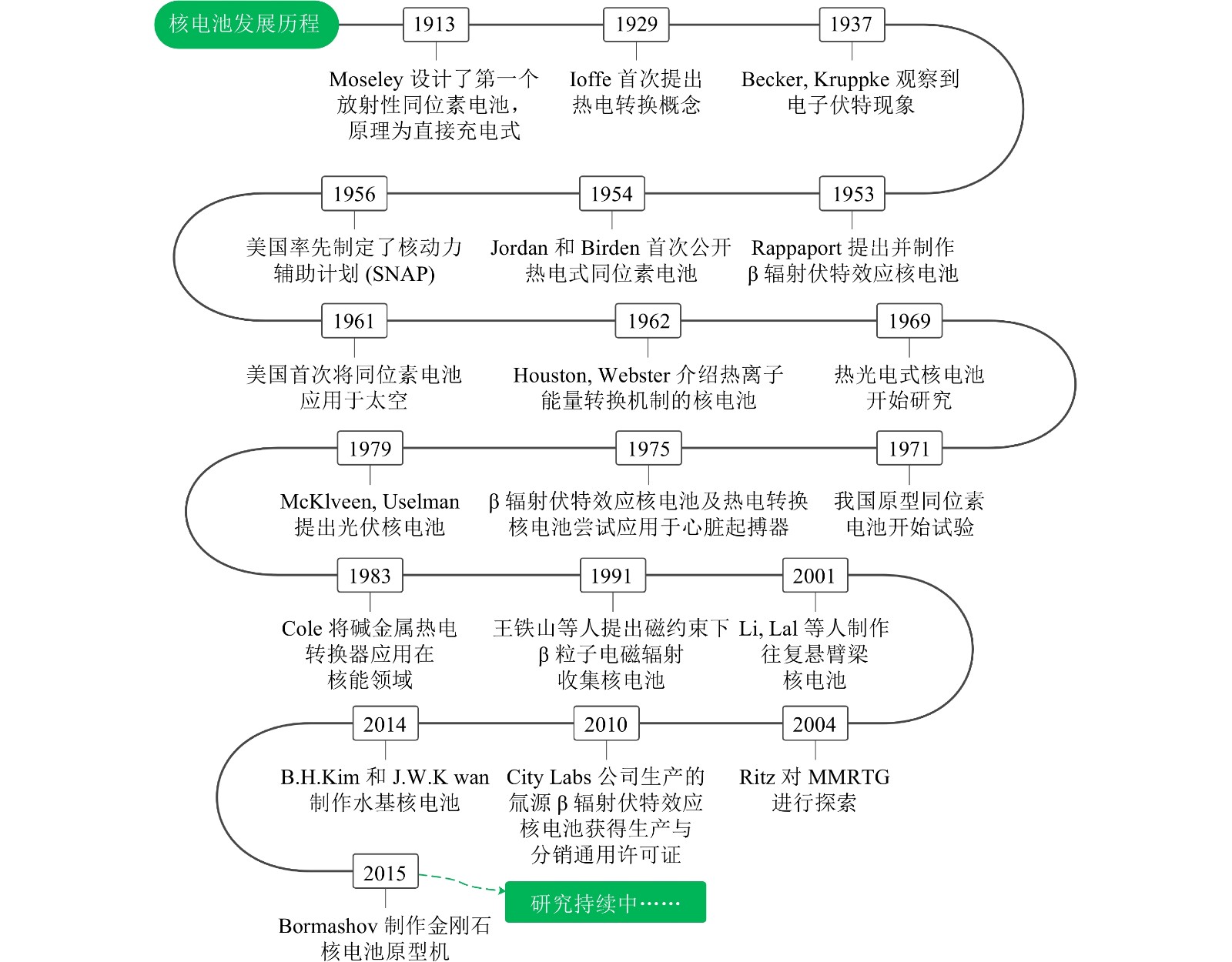
 下载:
下载:
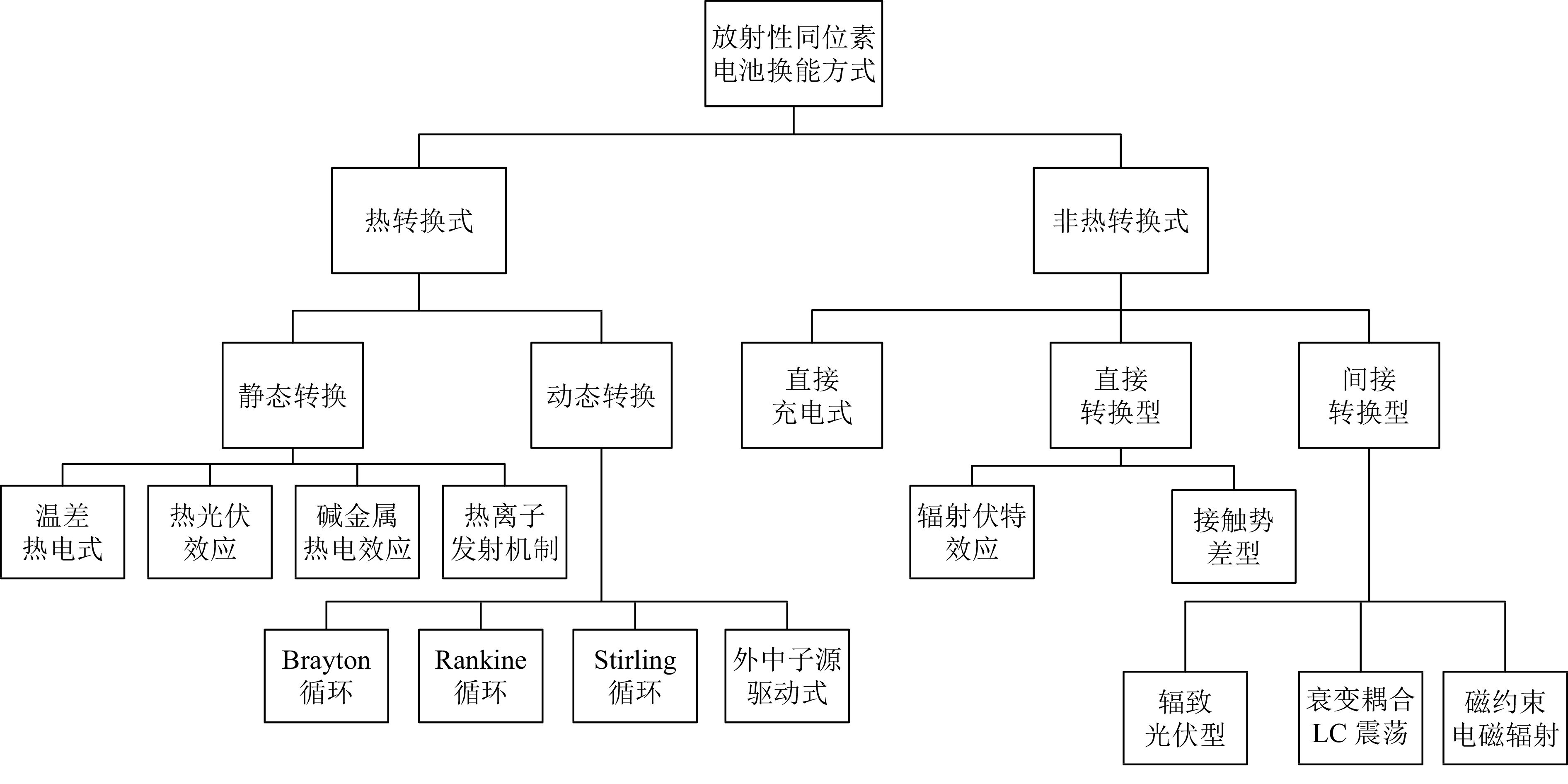
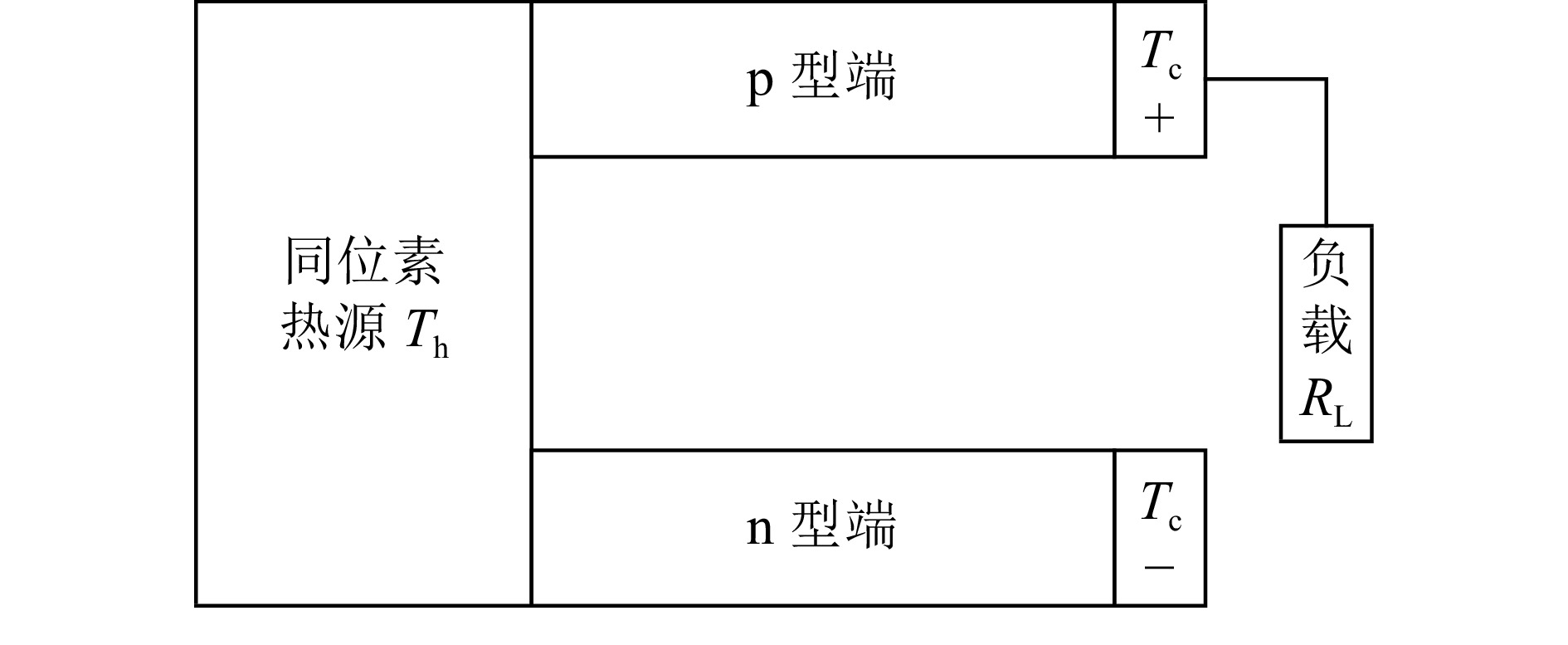
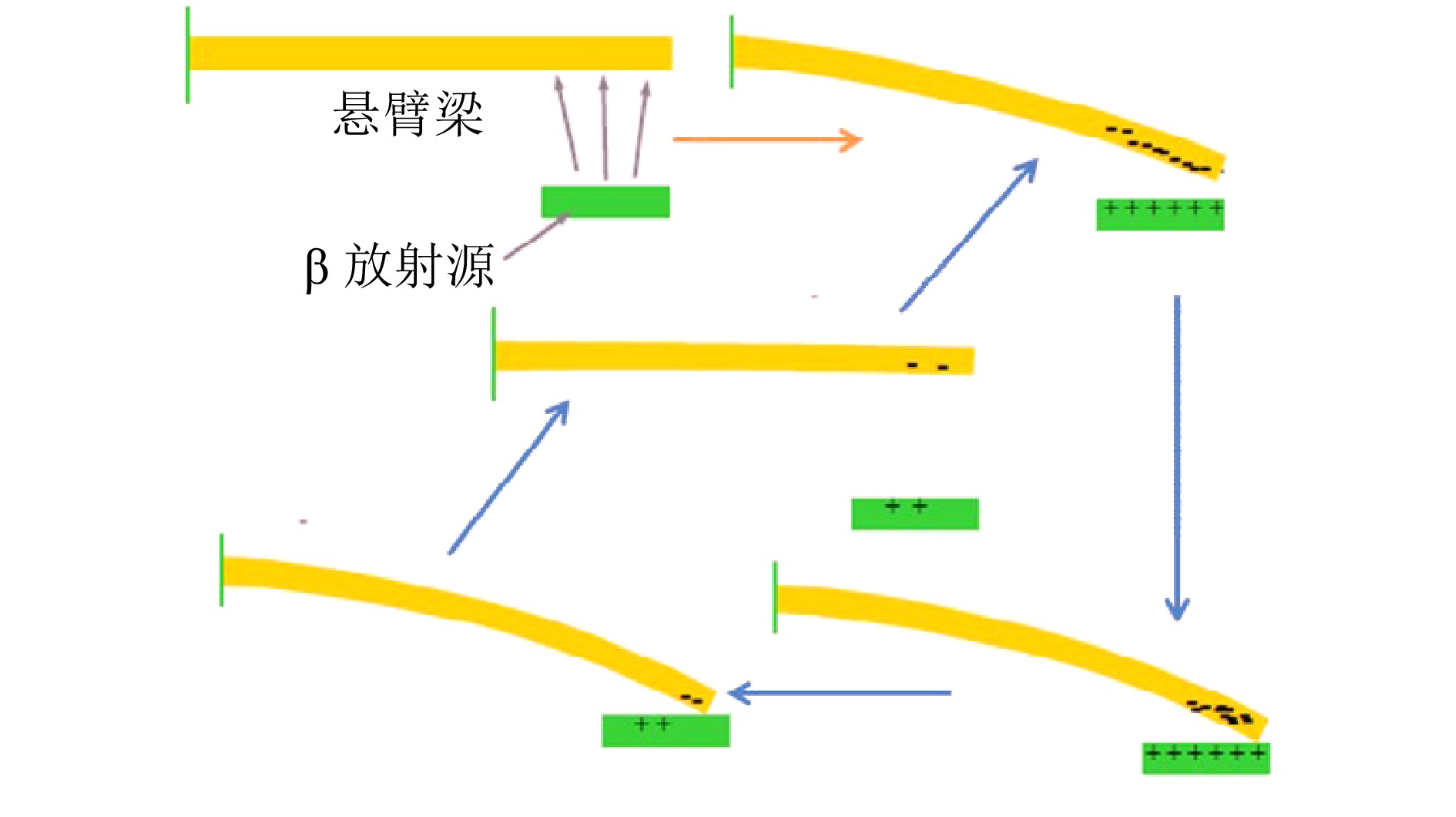
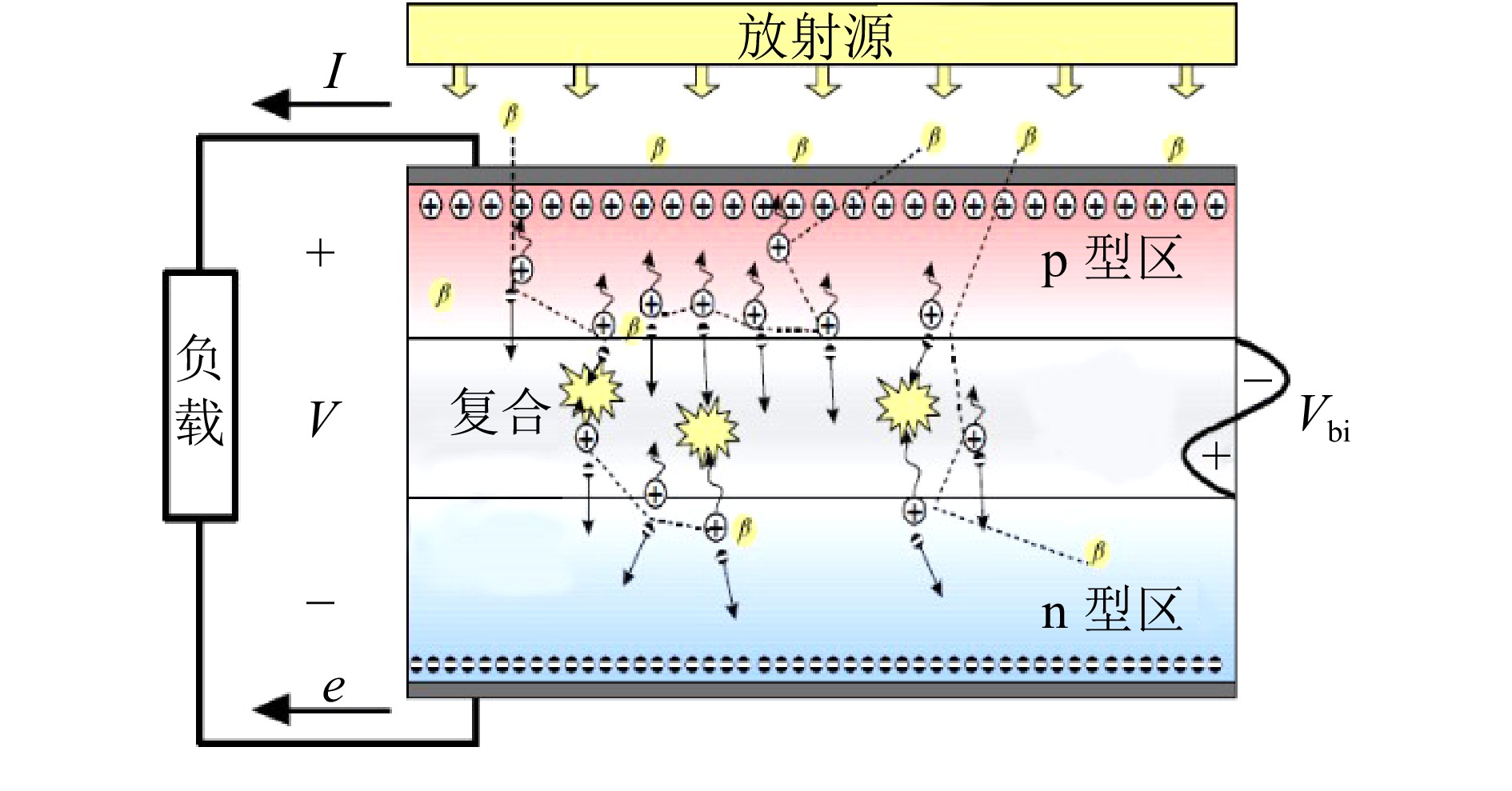
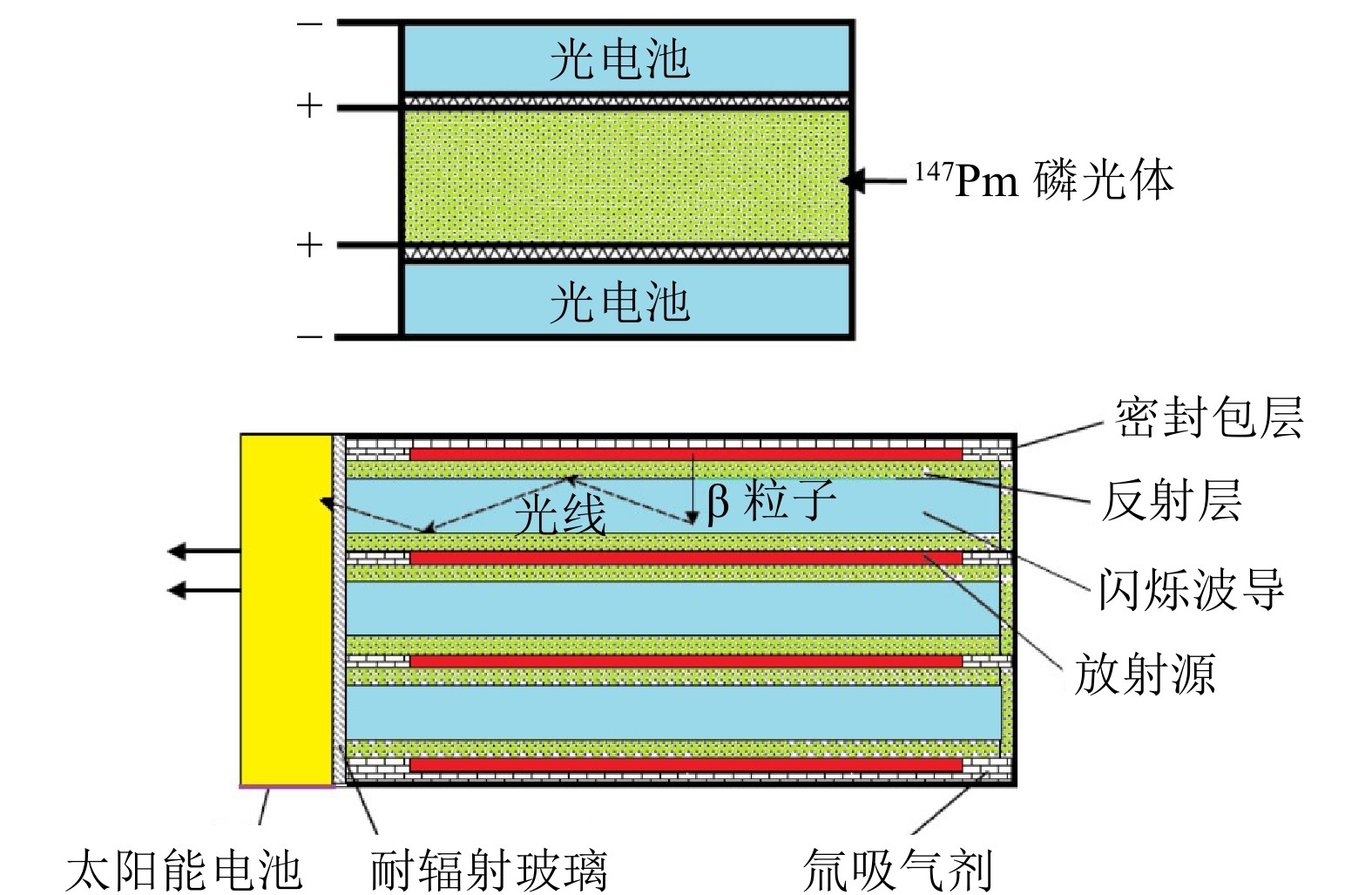
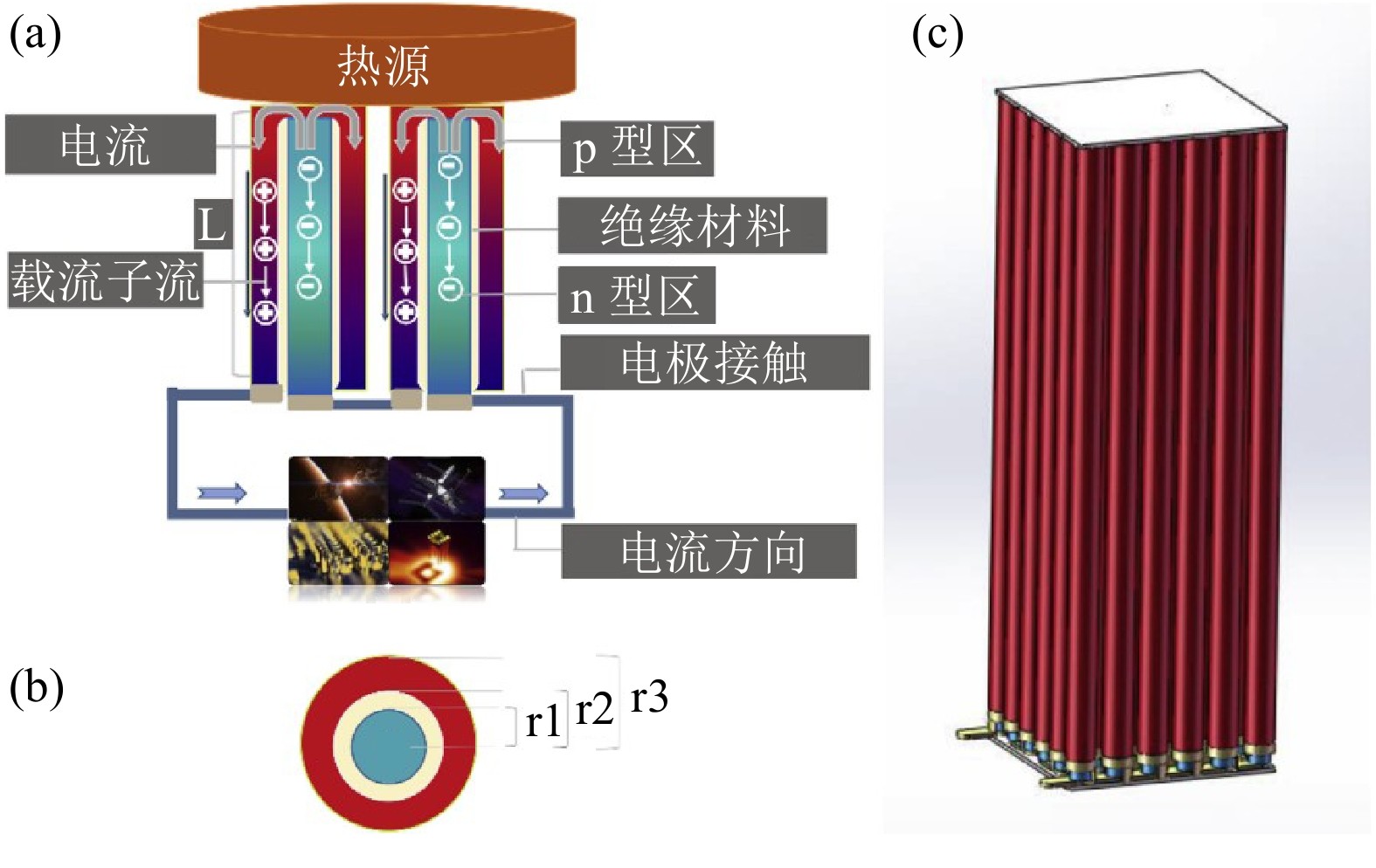
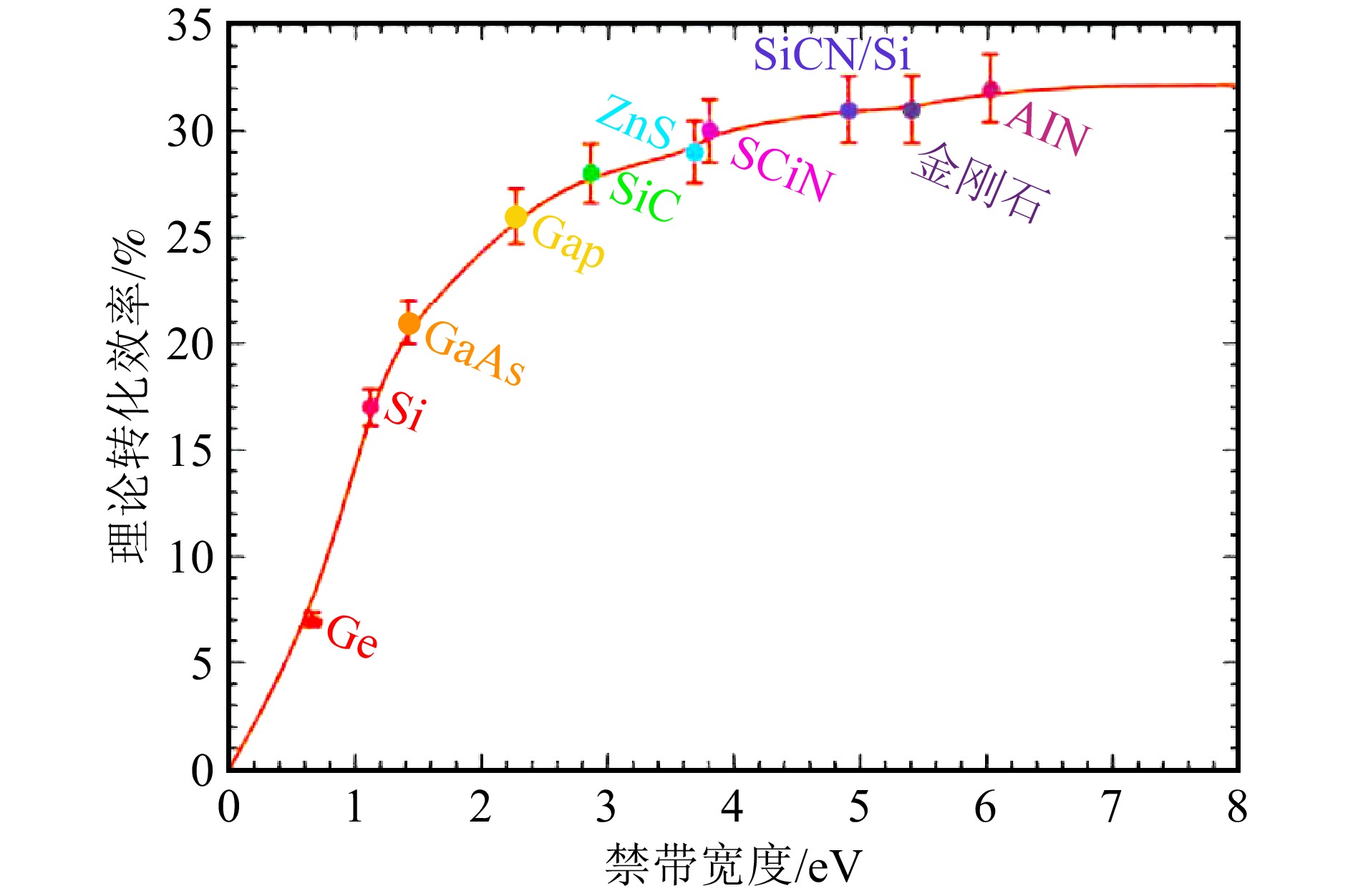

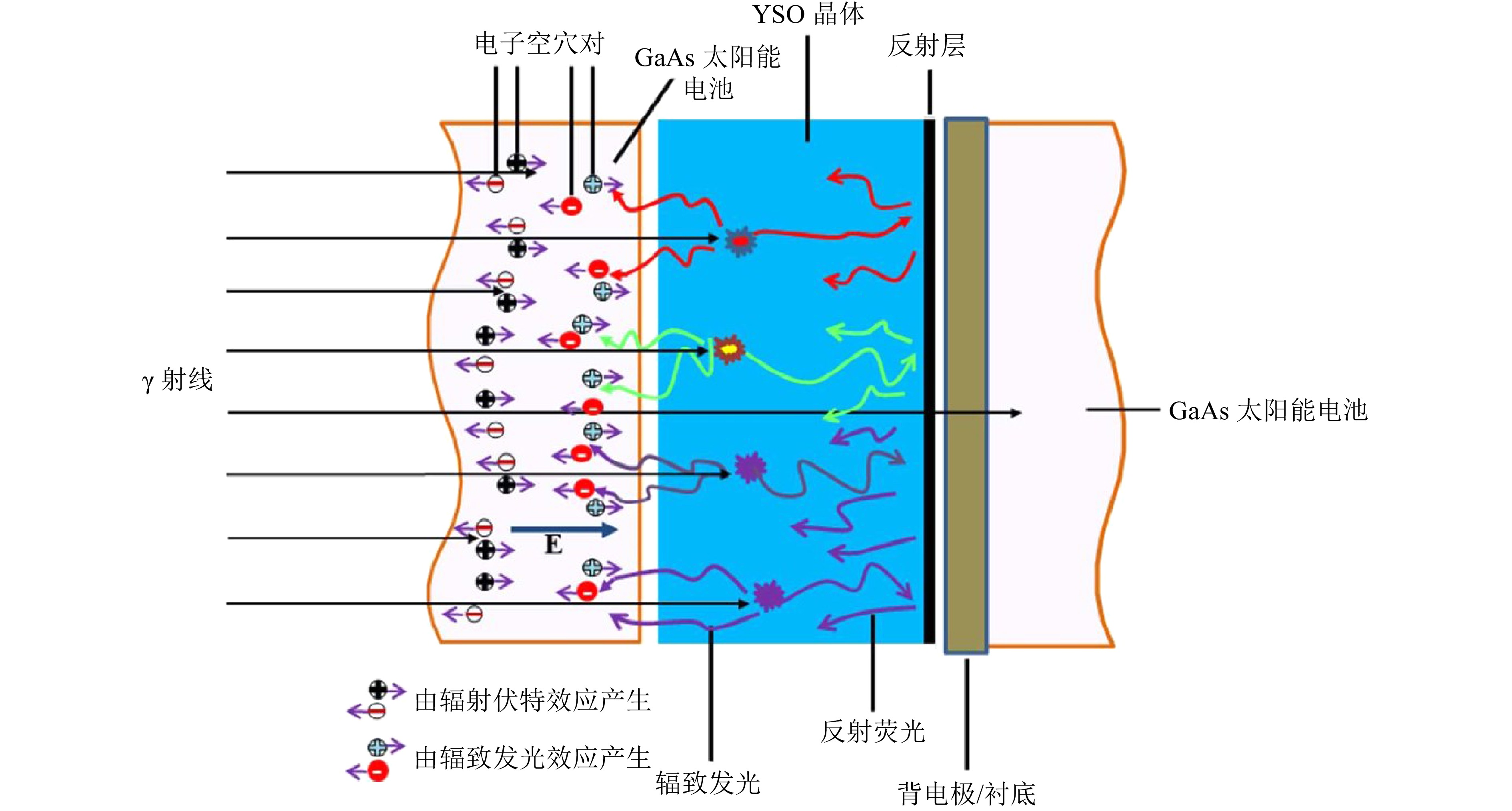




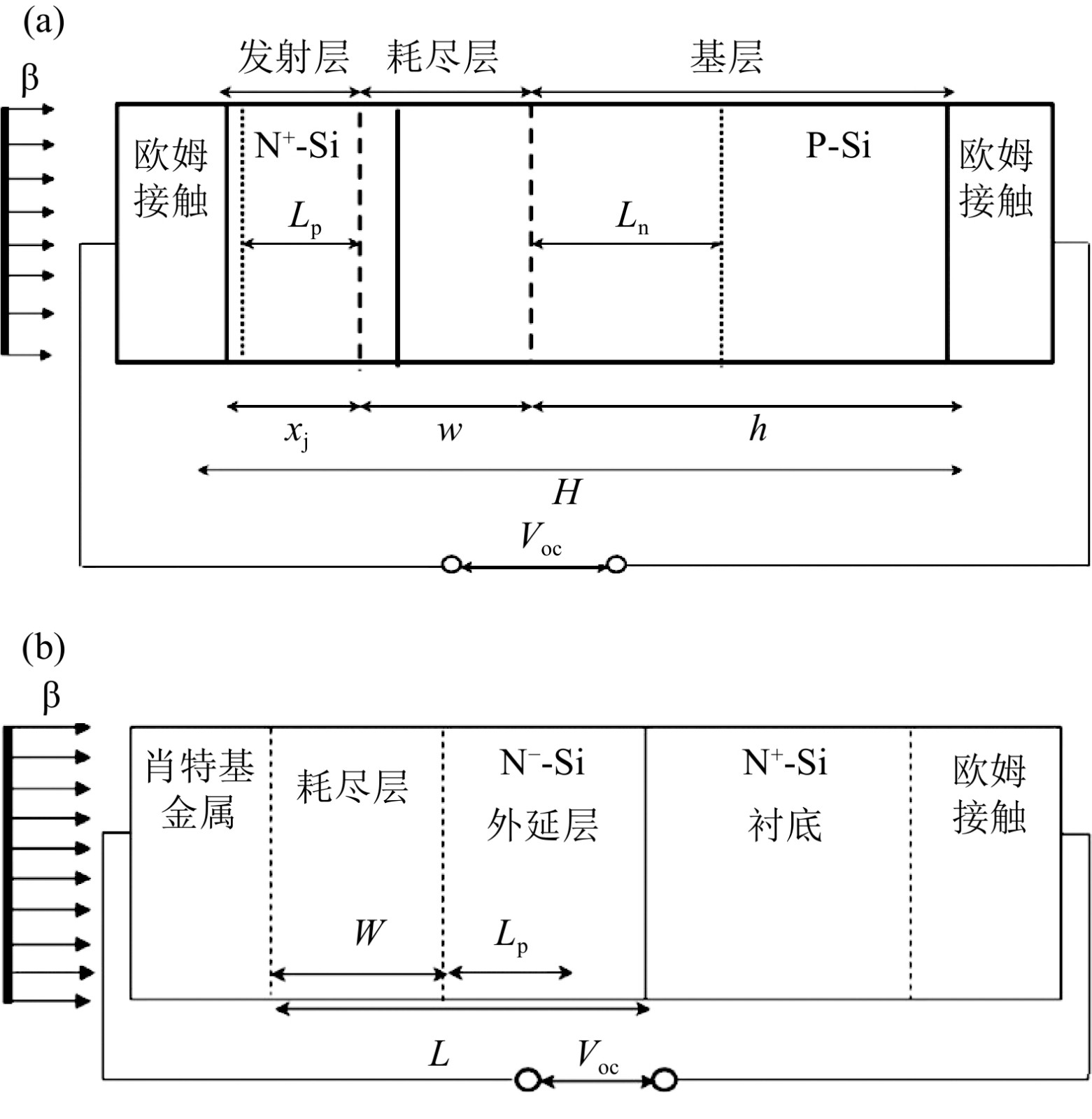



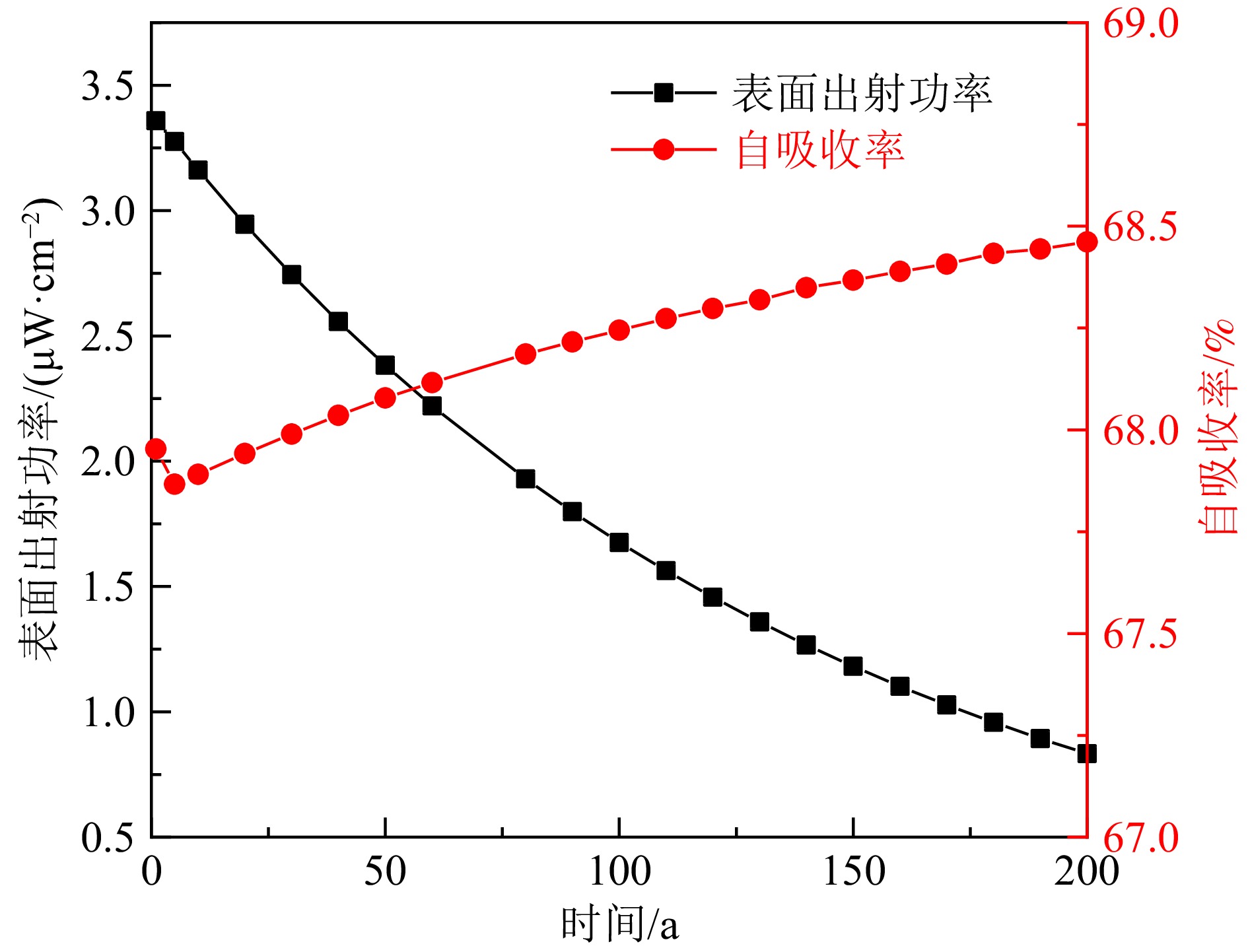

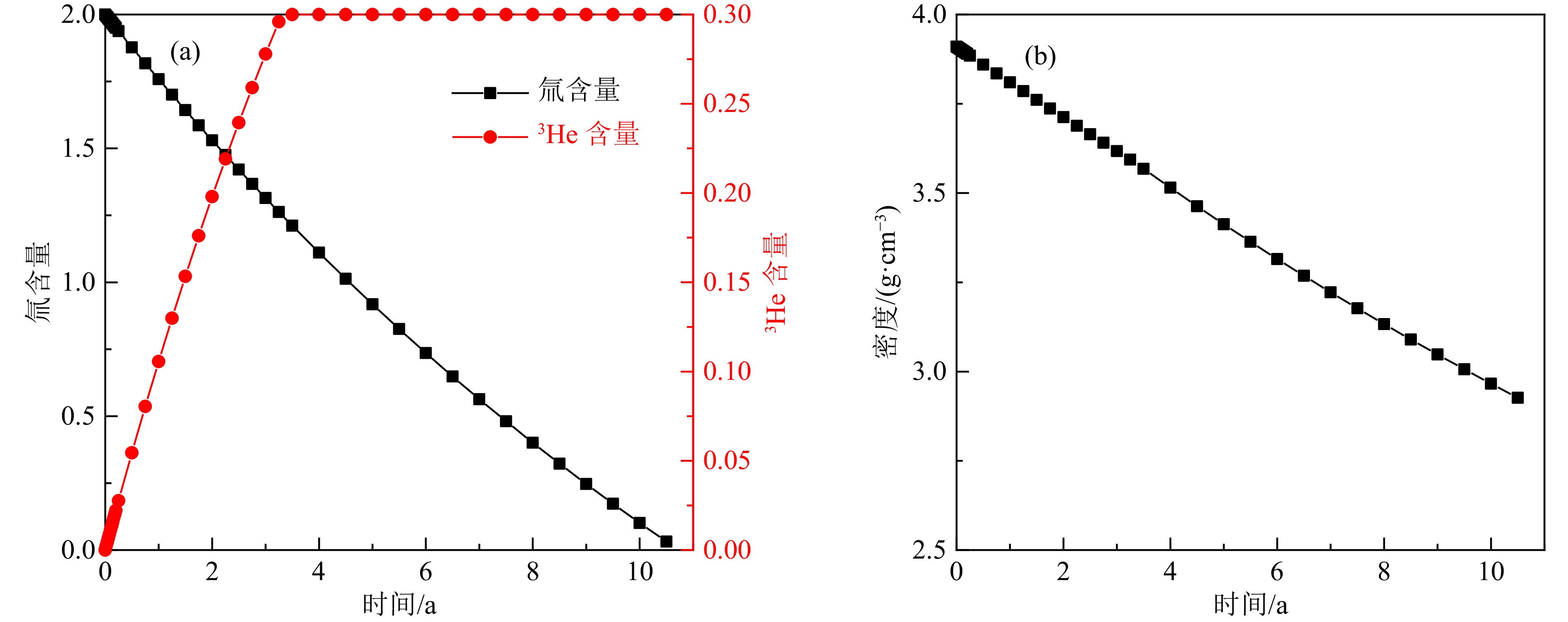

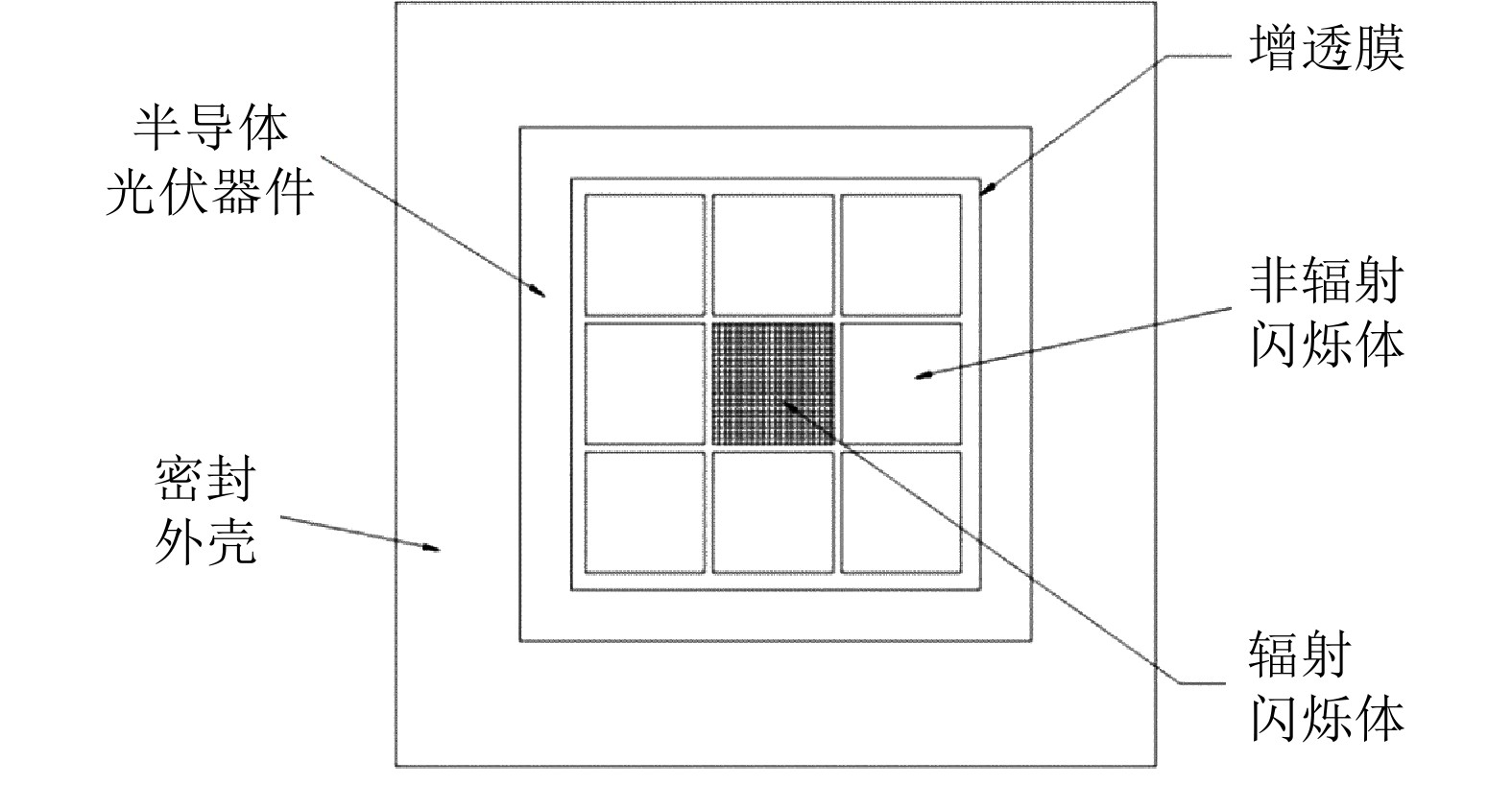
 甘公网安备 62010202000723号
甘公网安备 62010202000723号